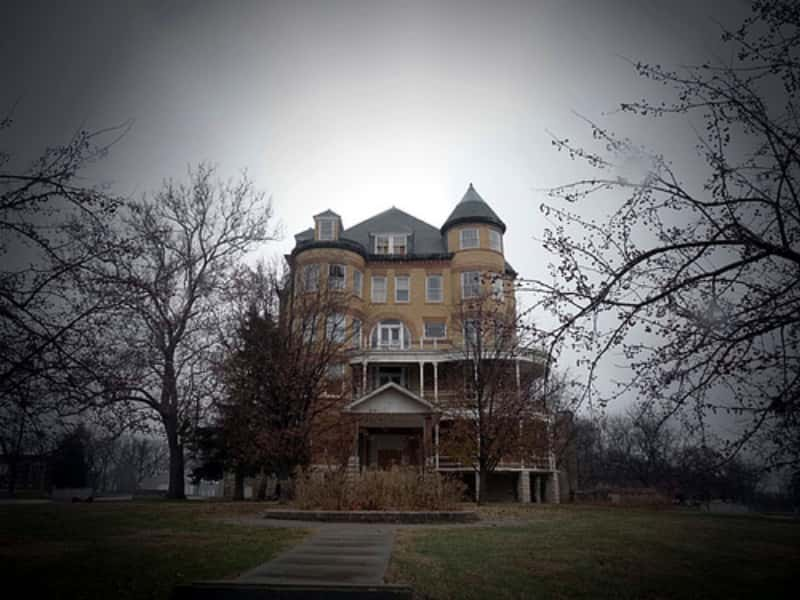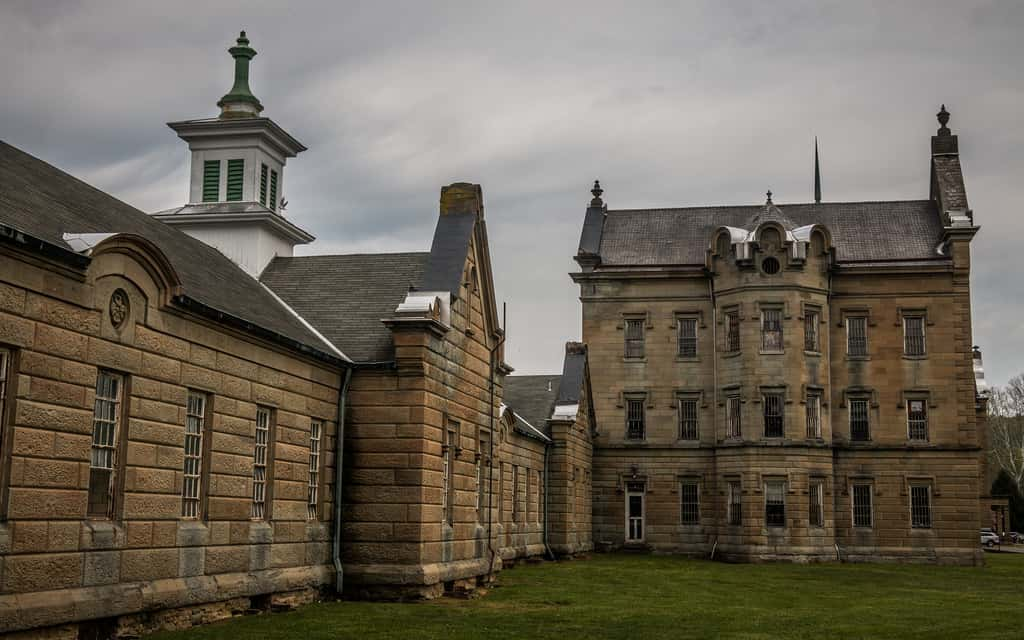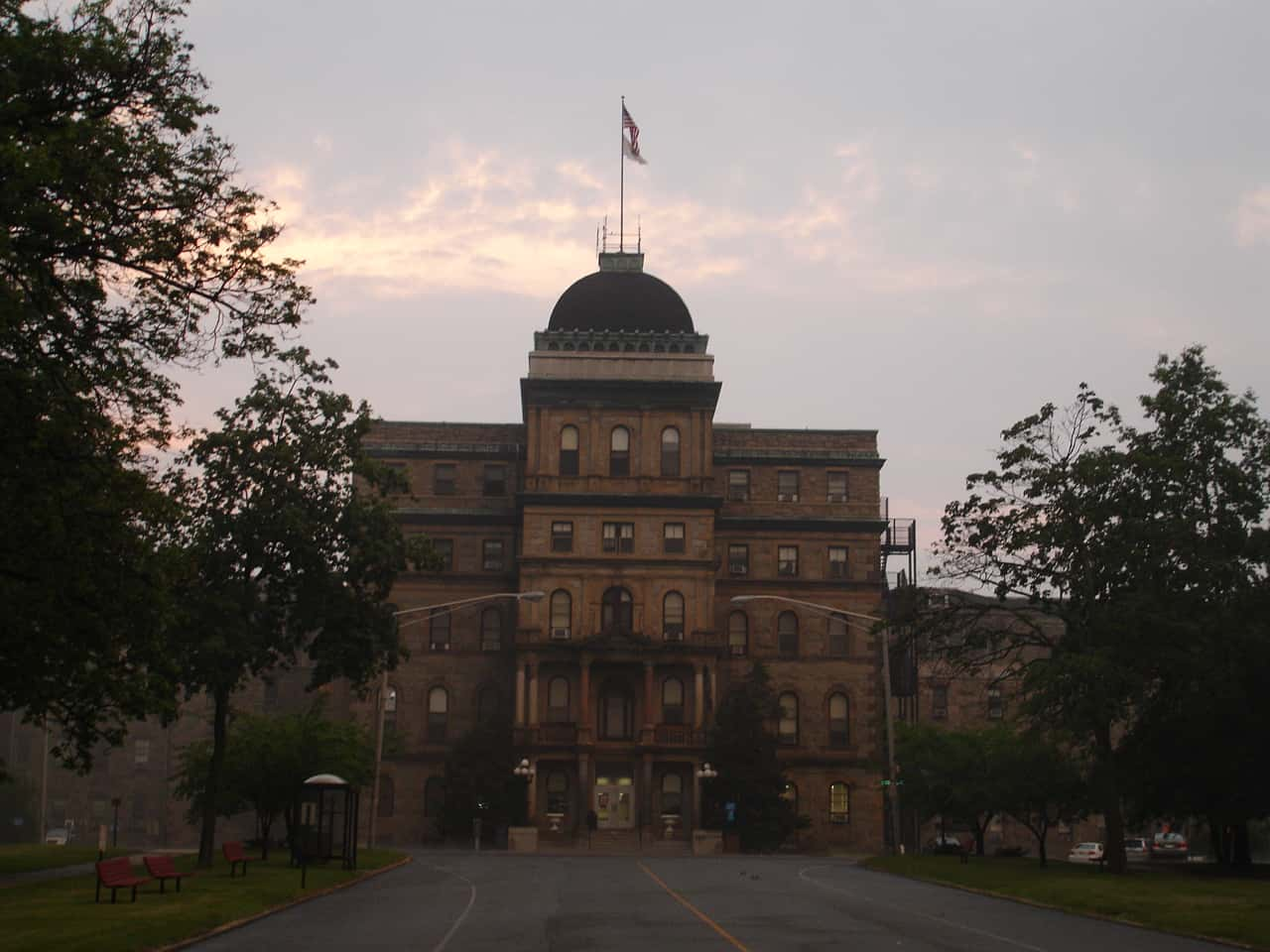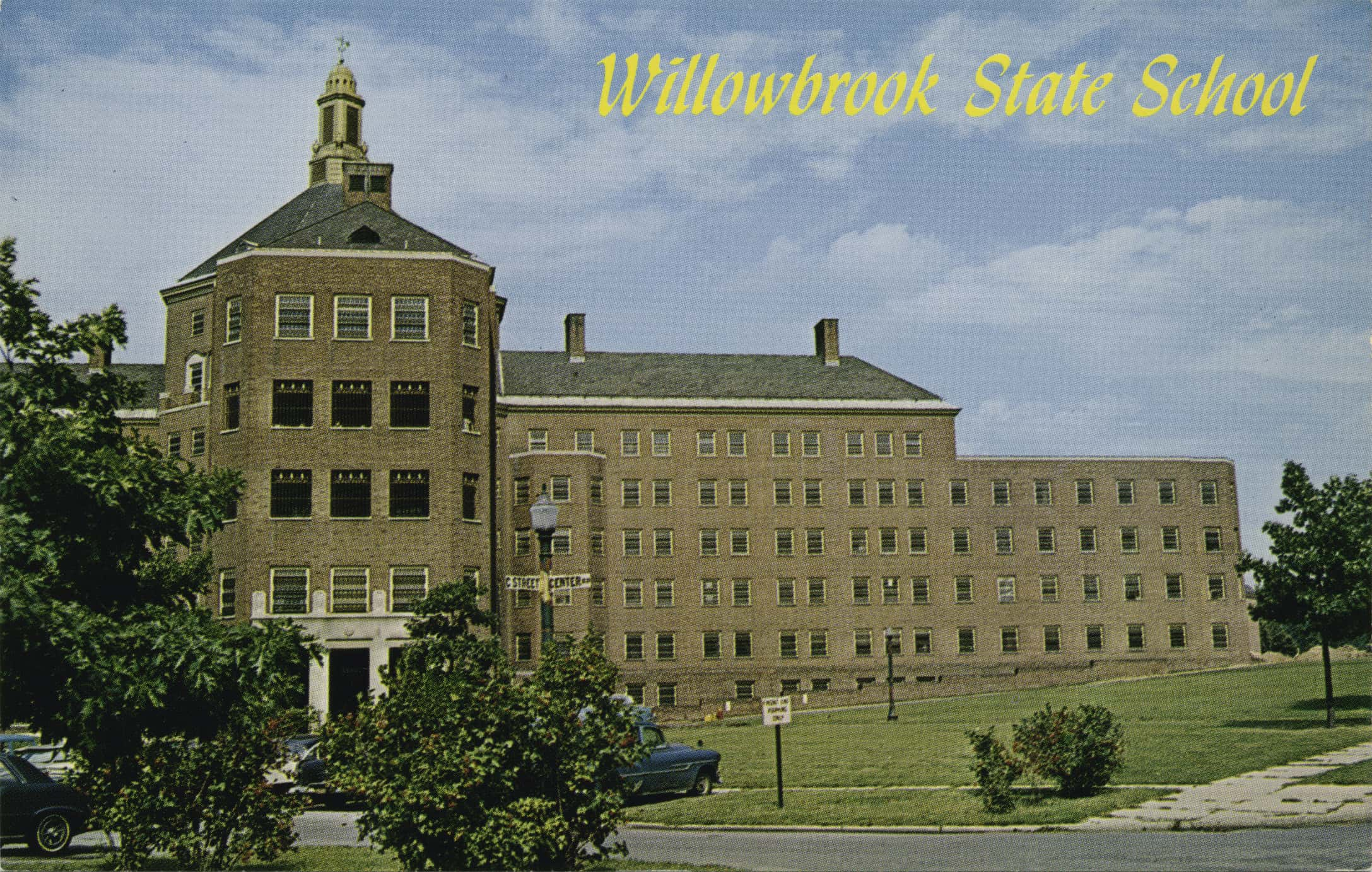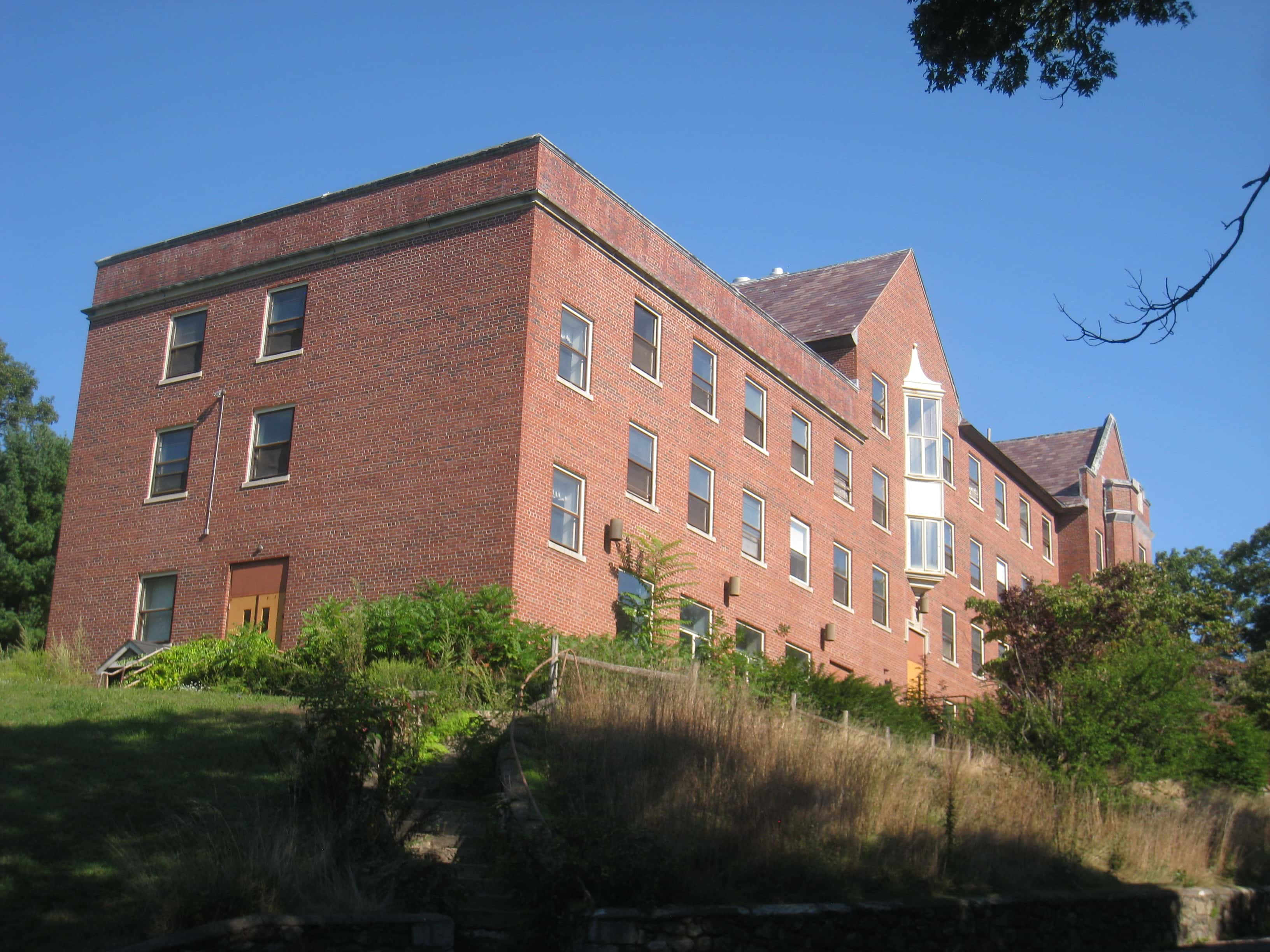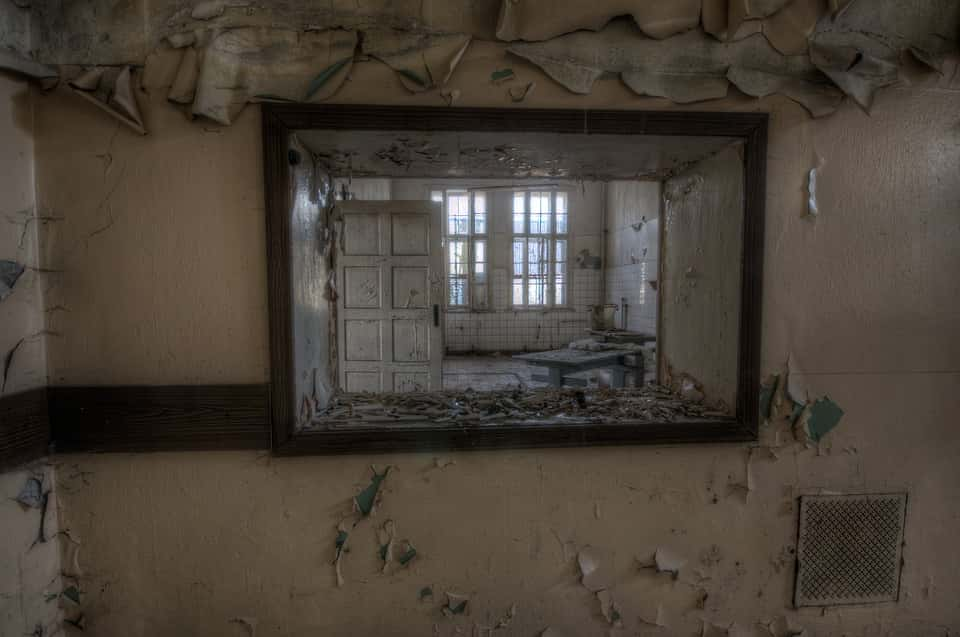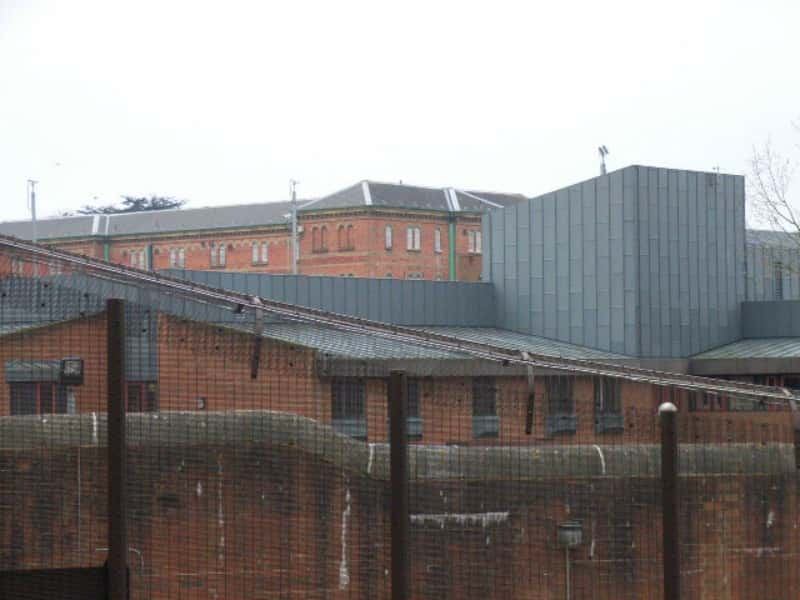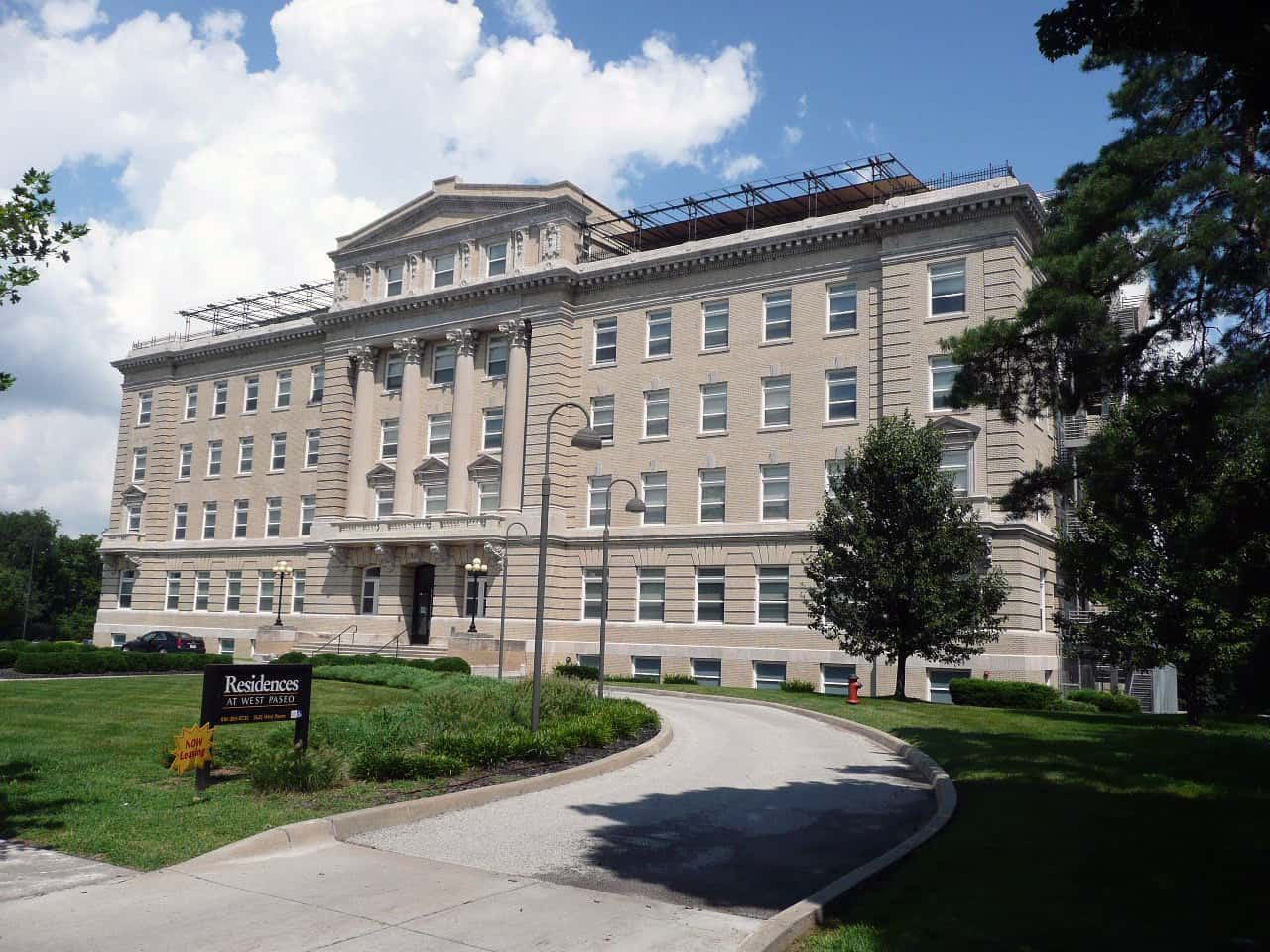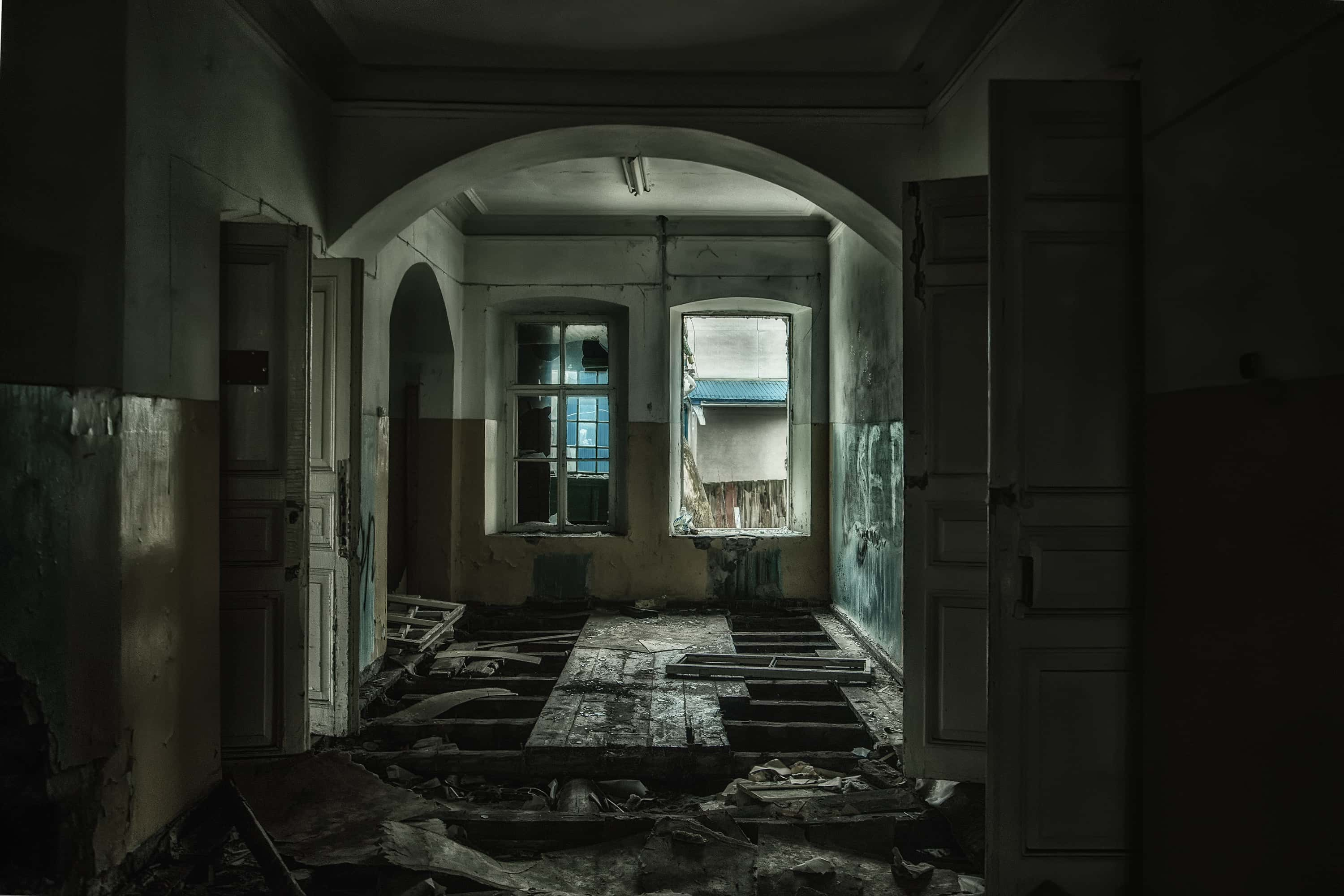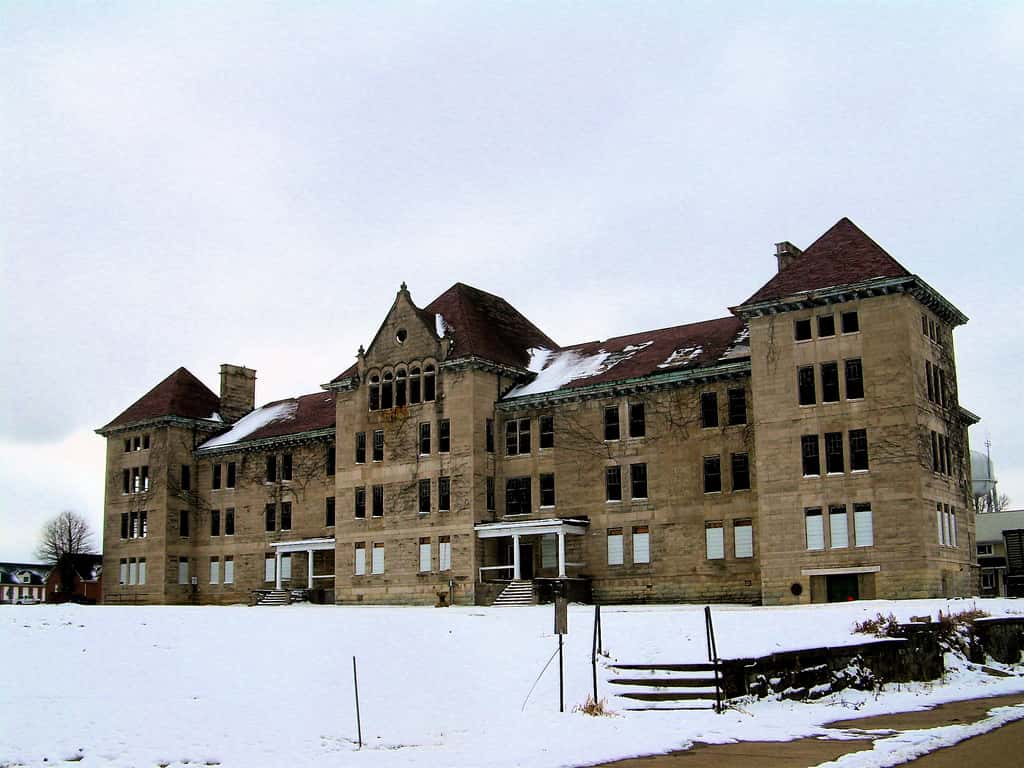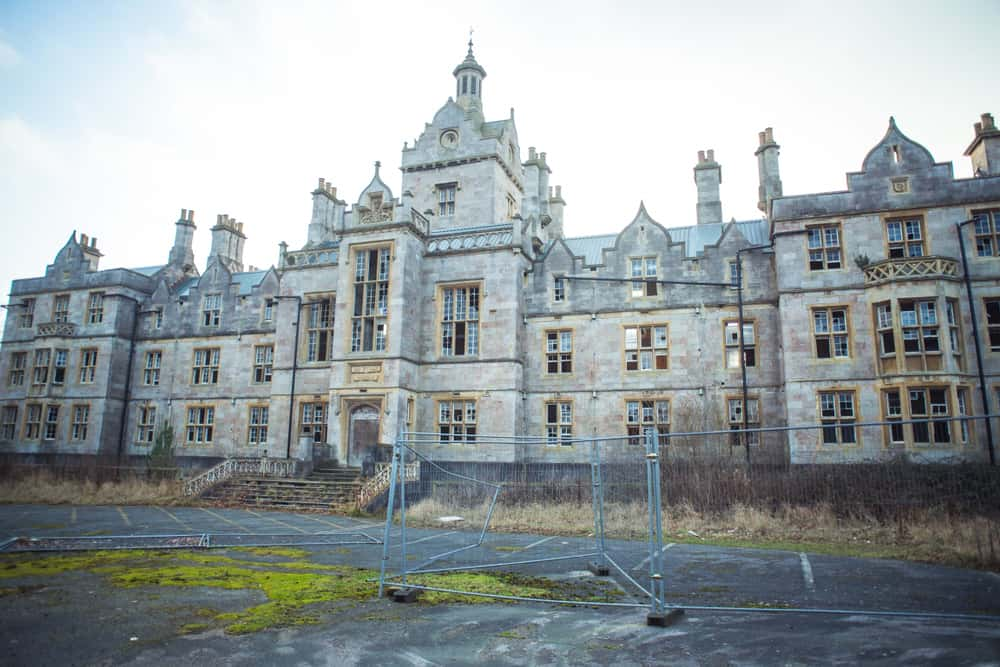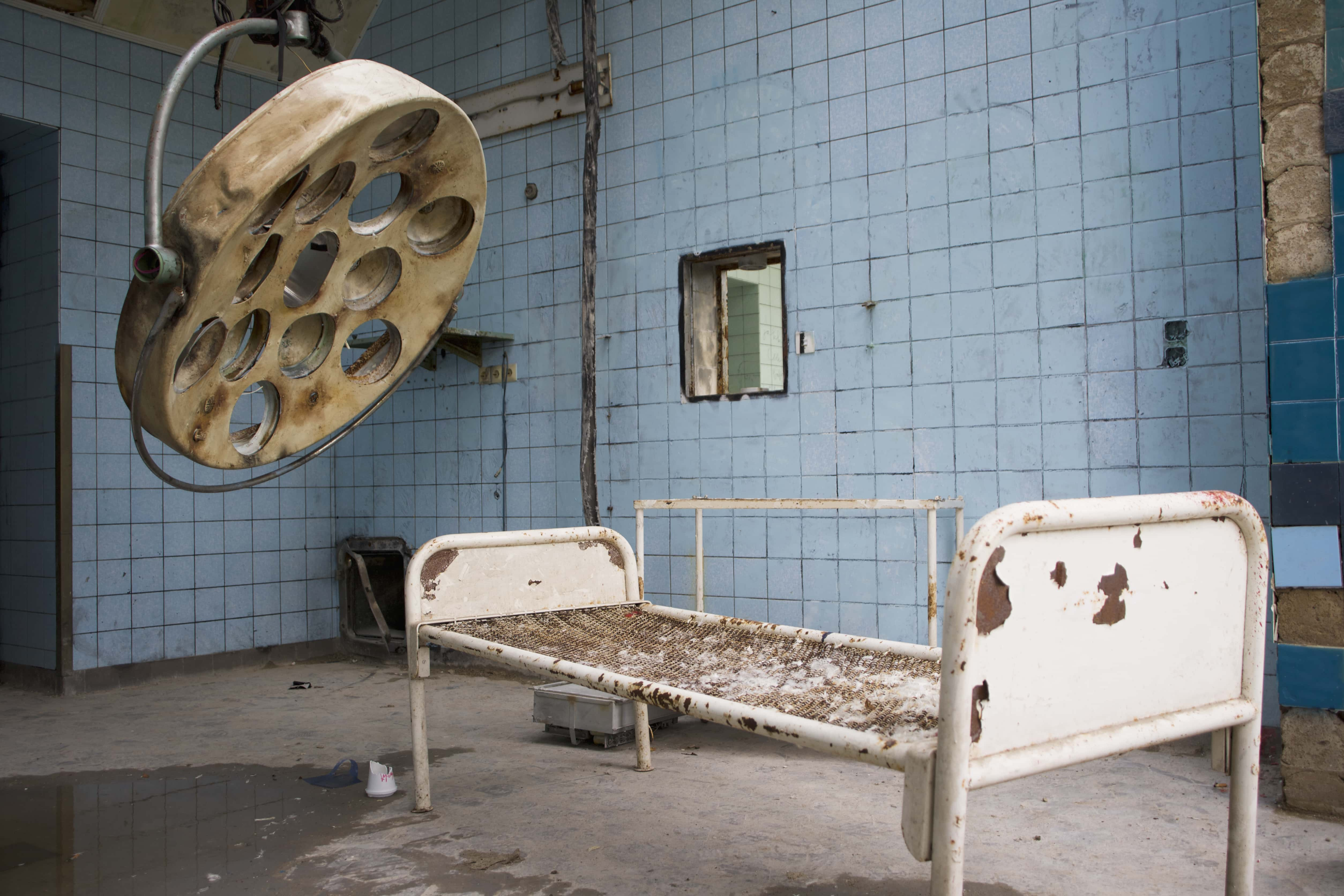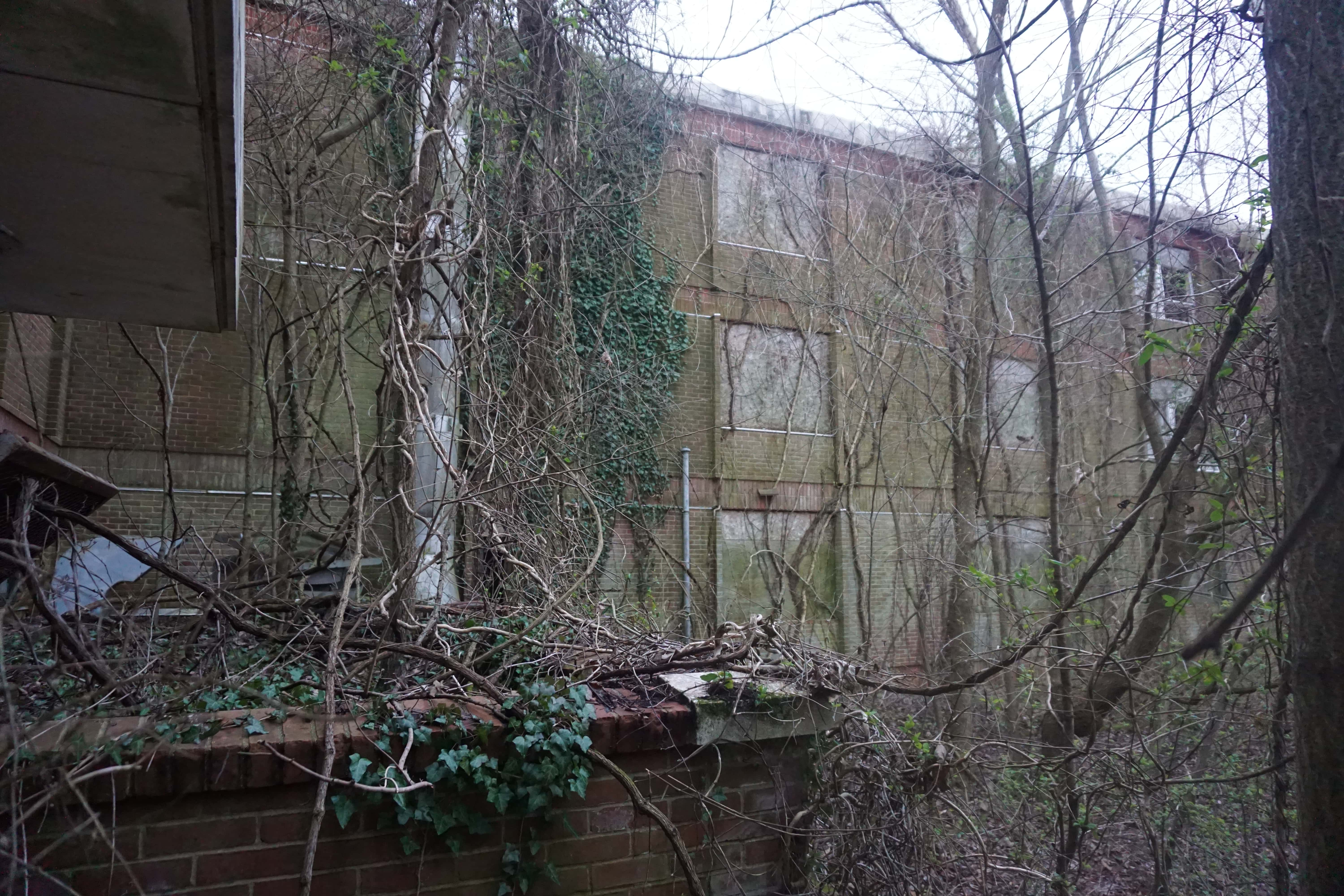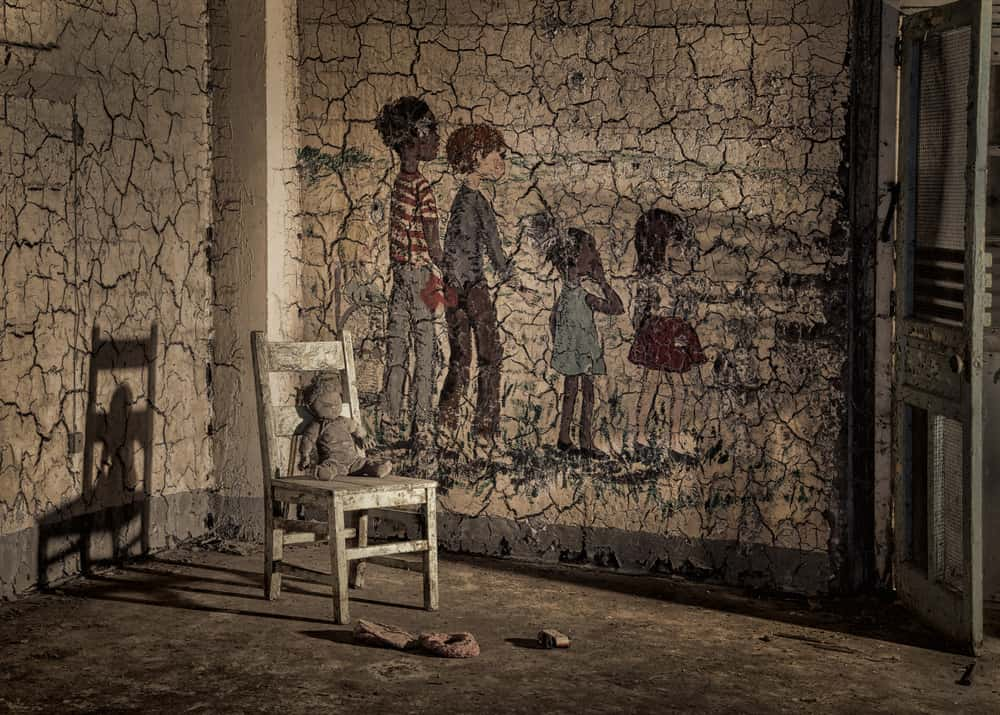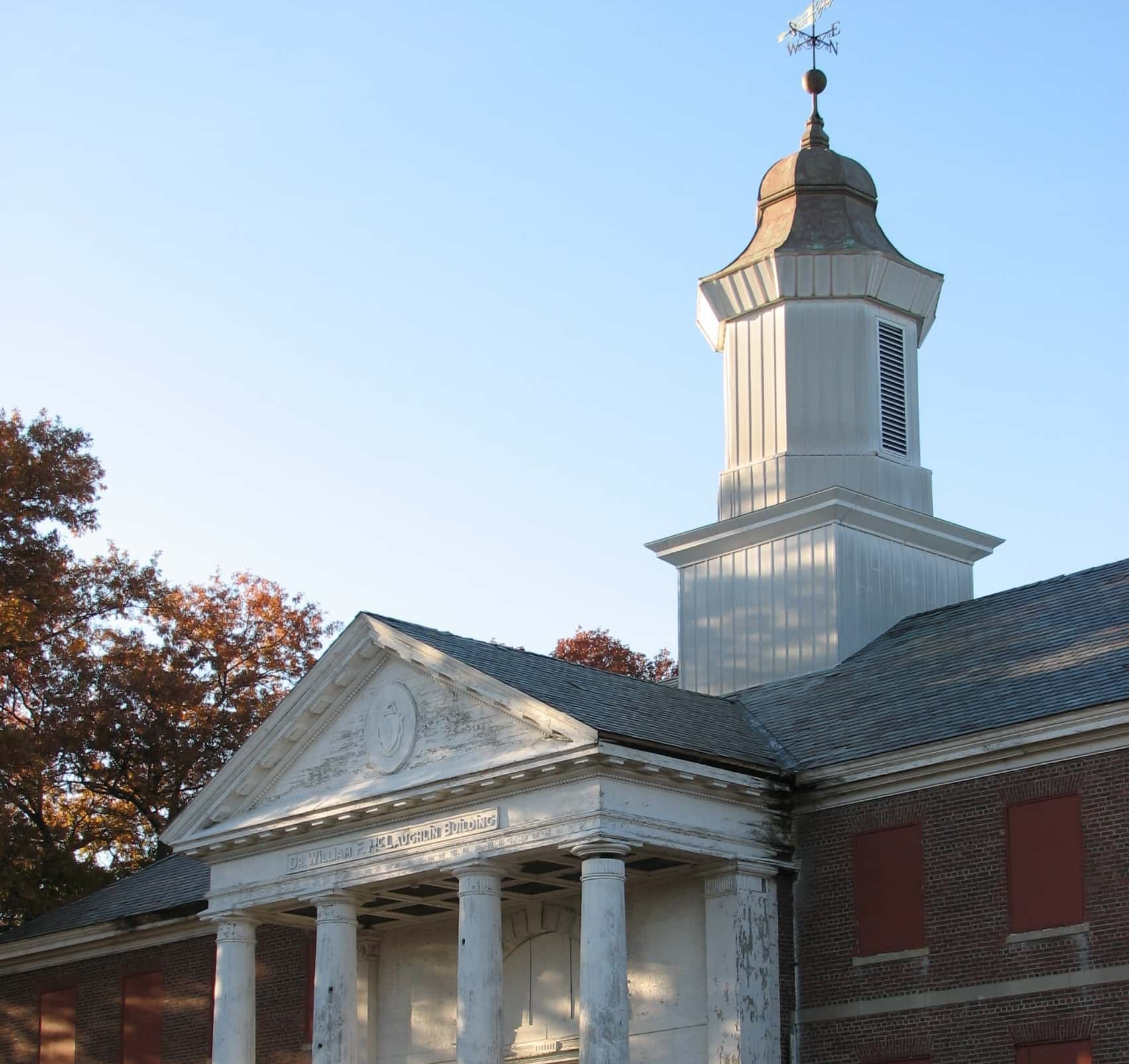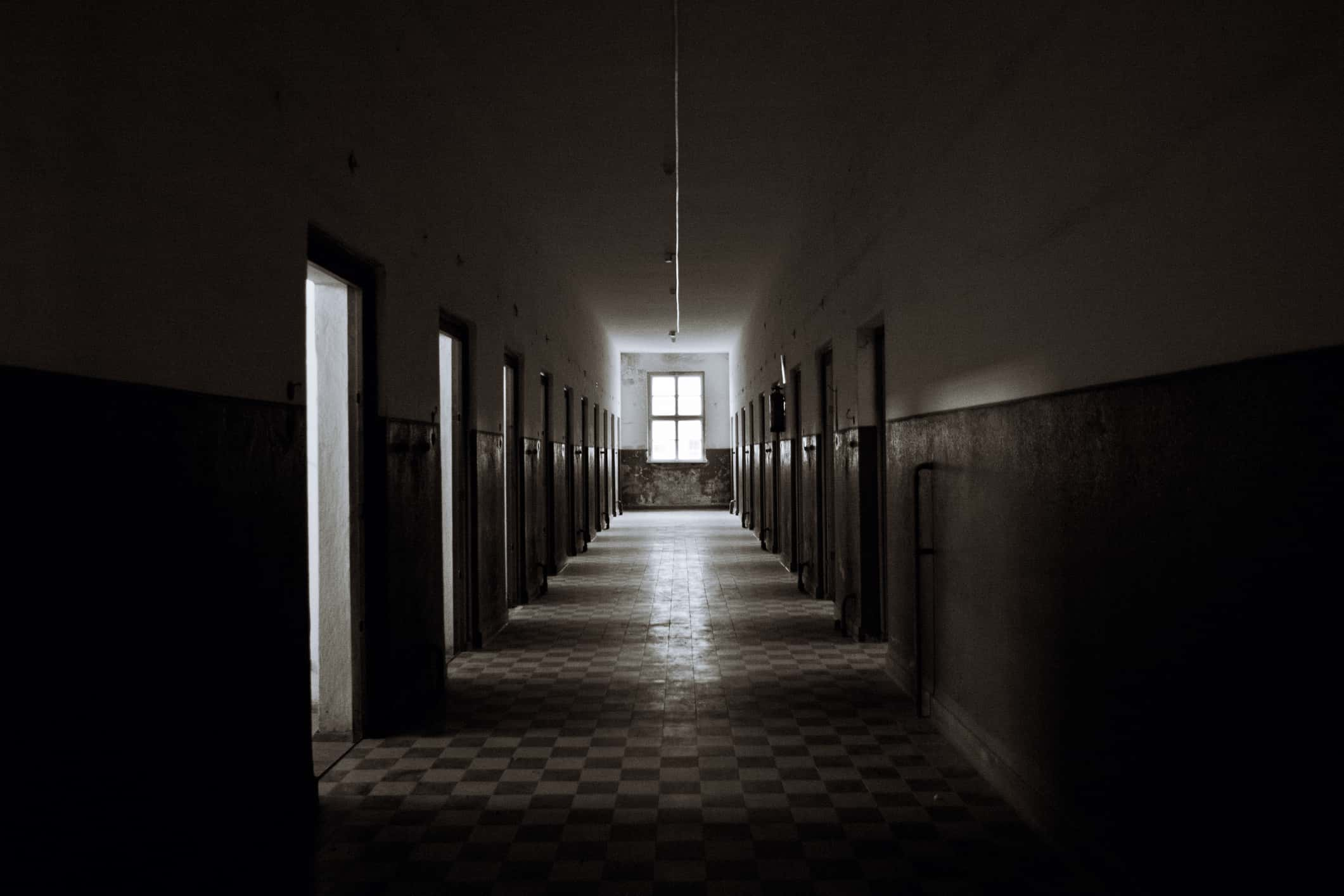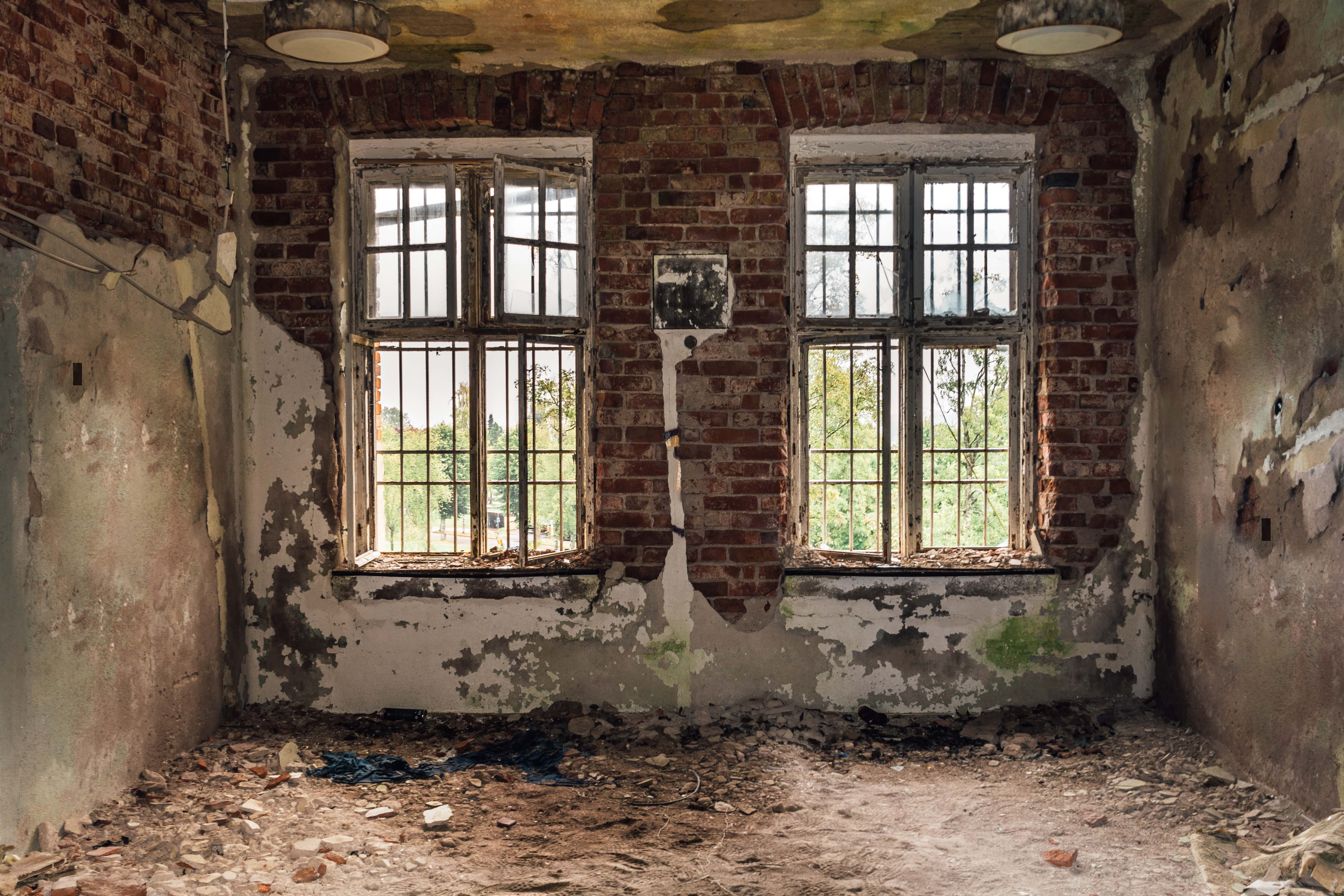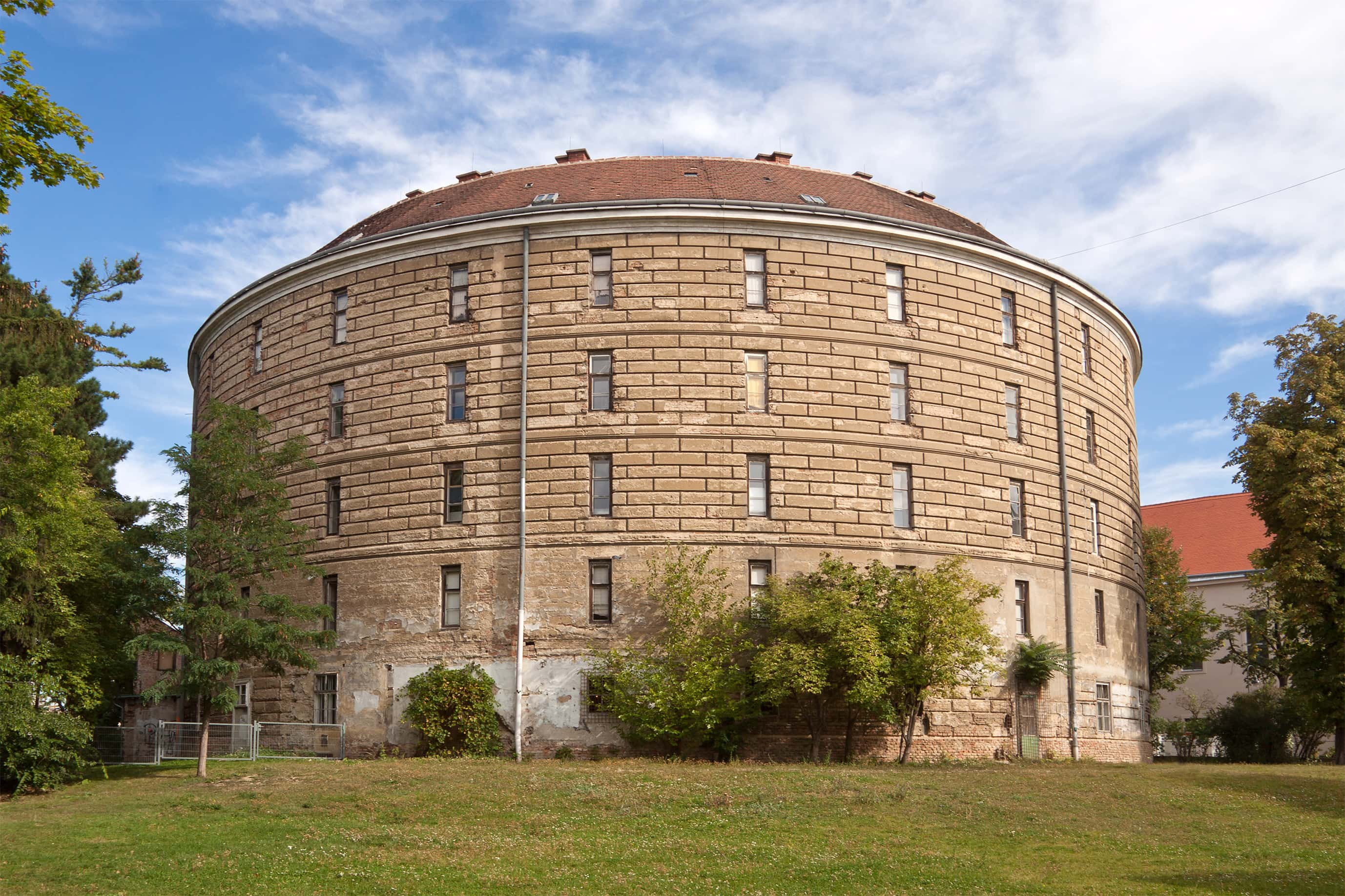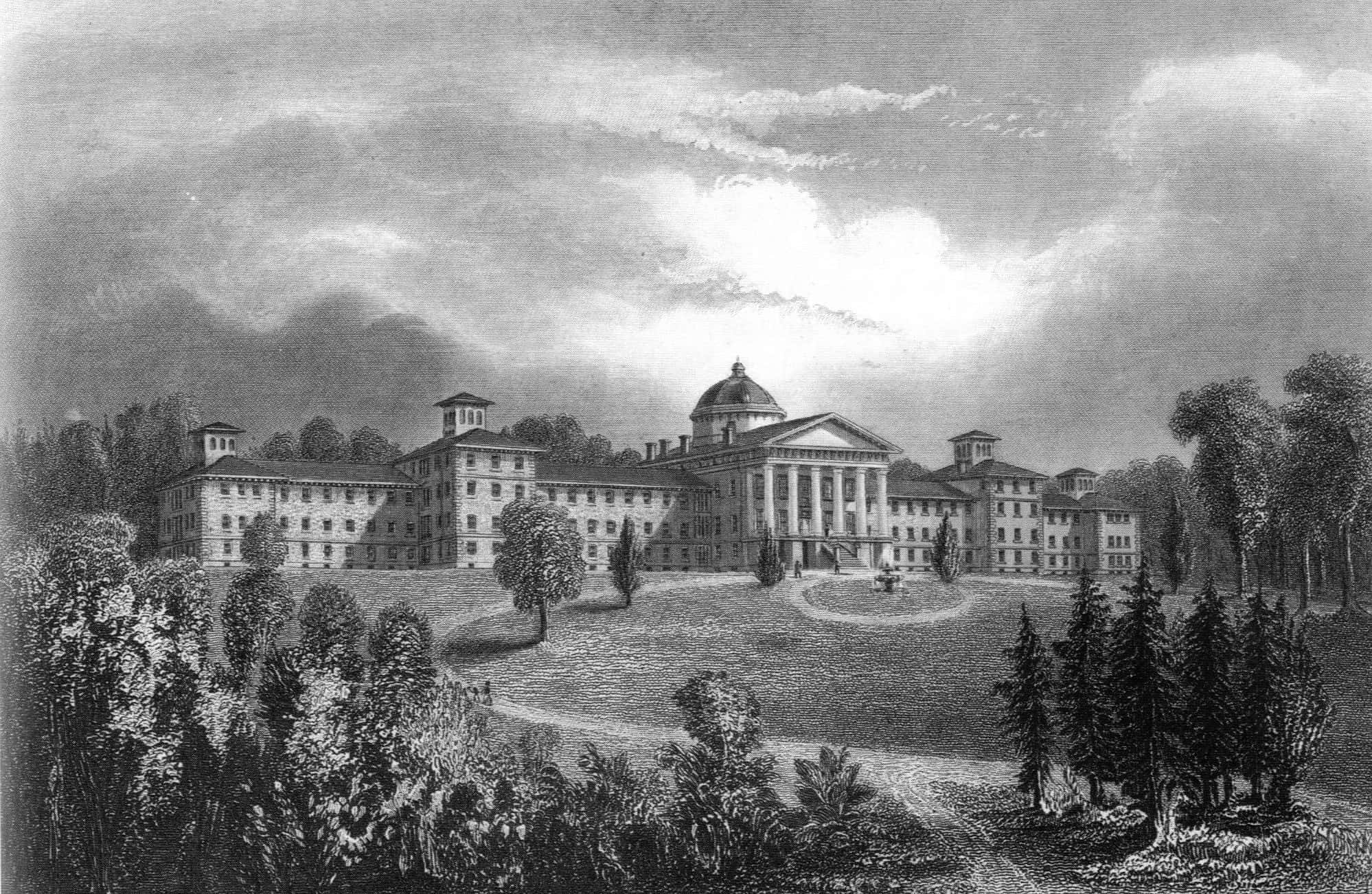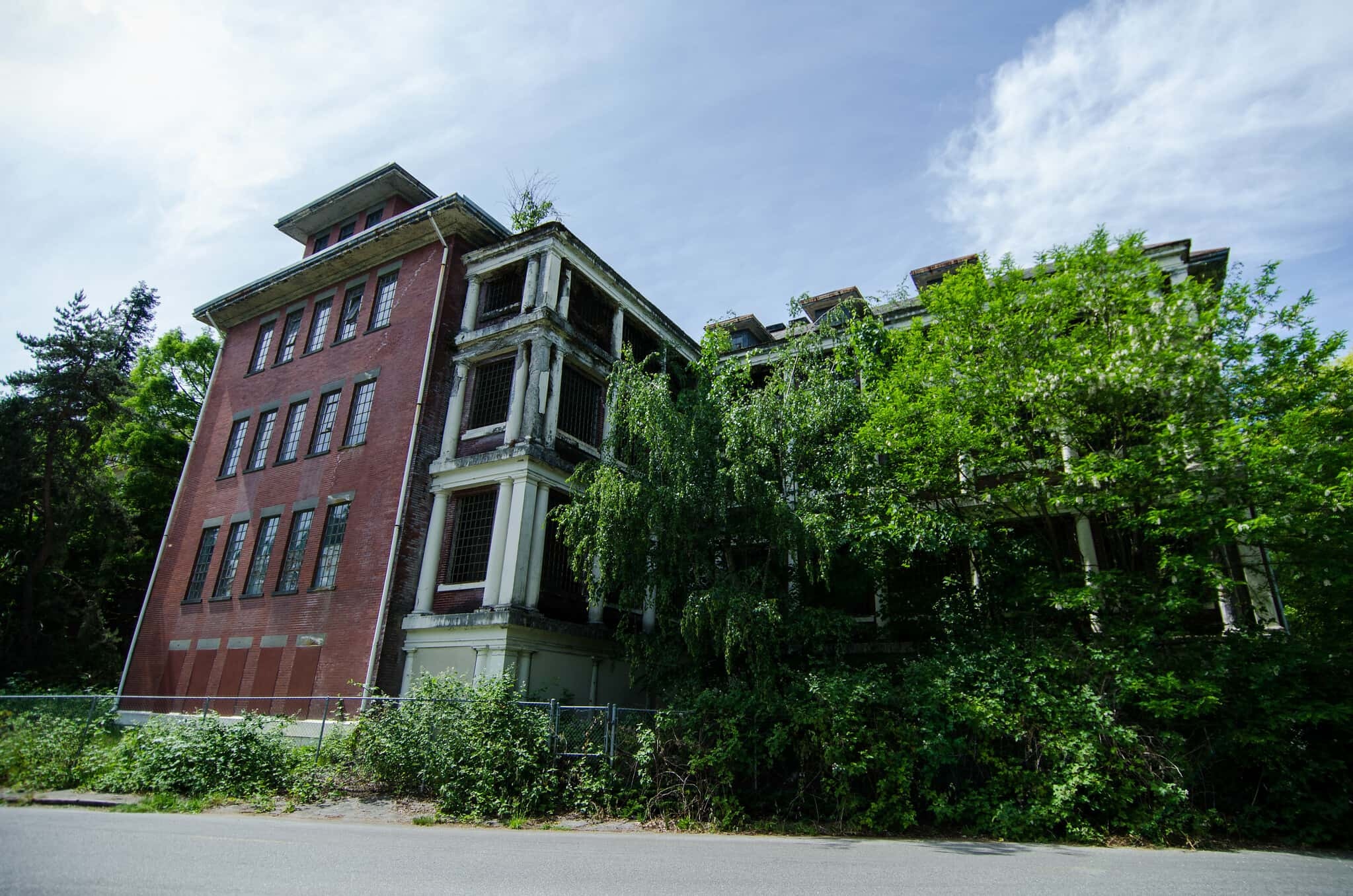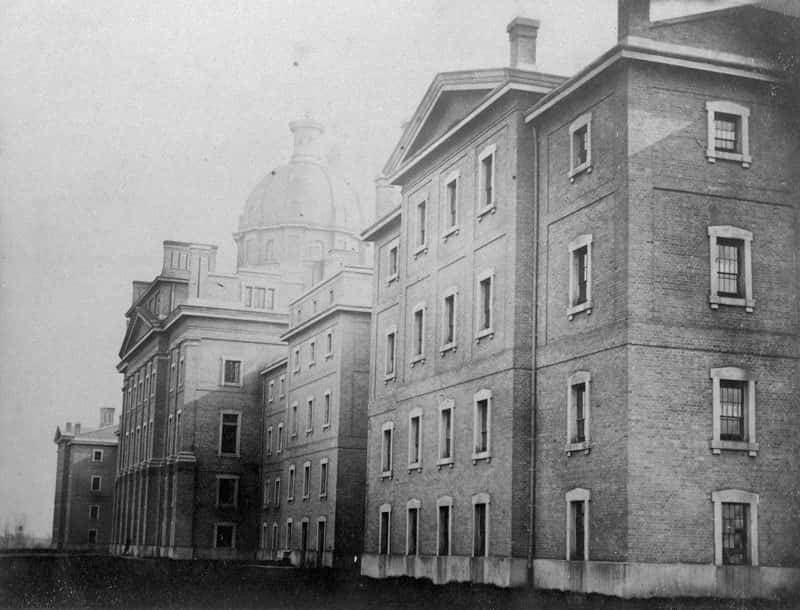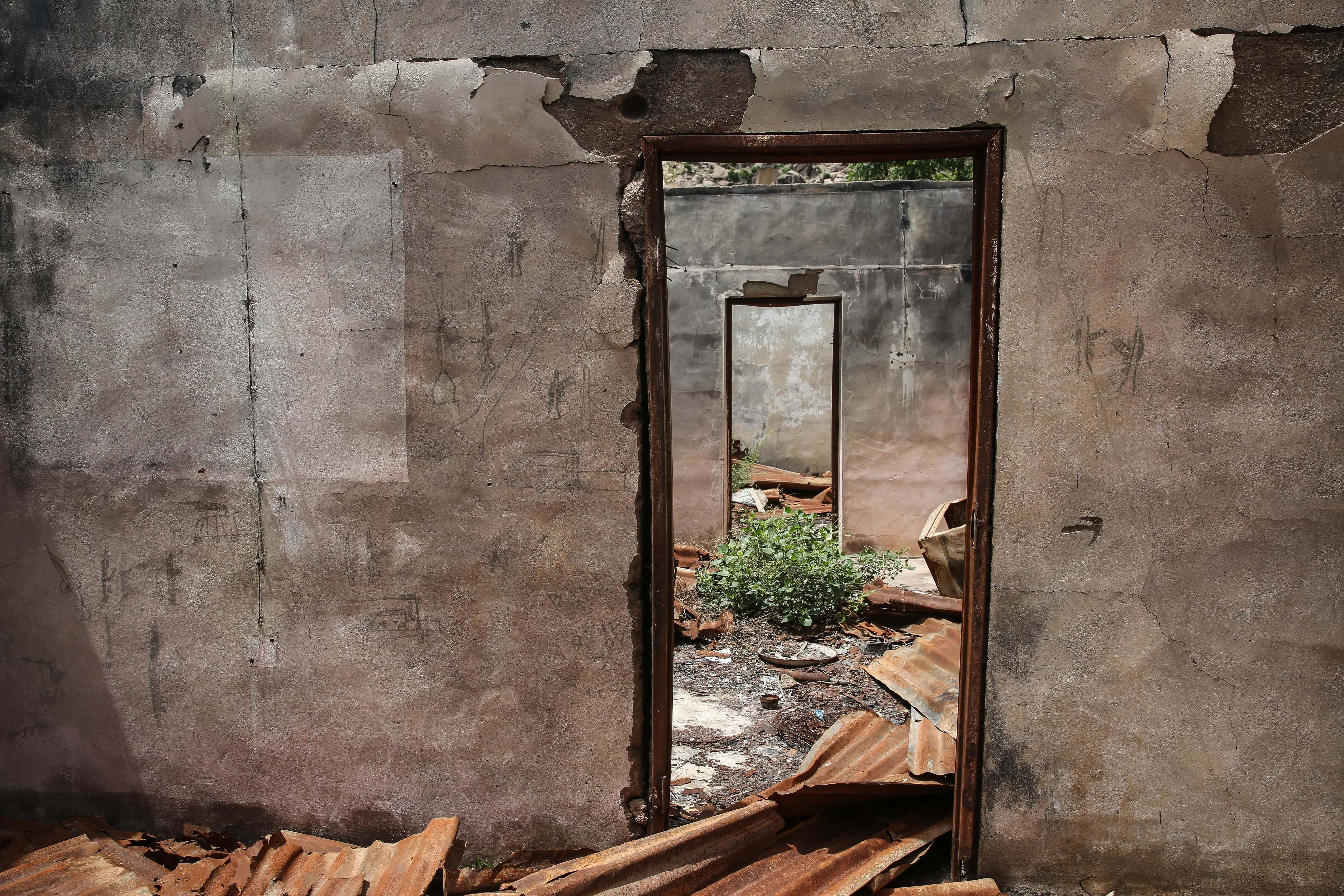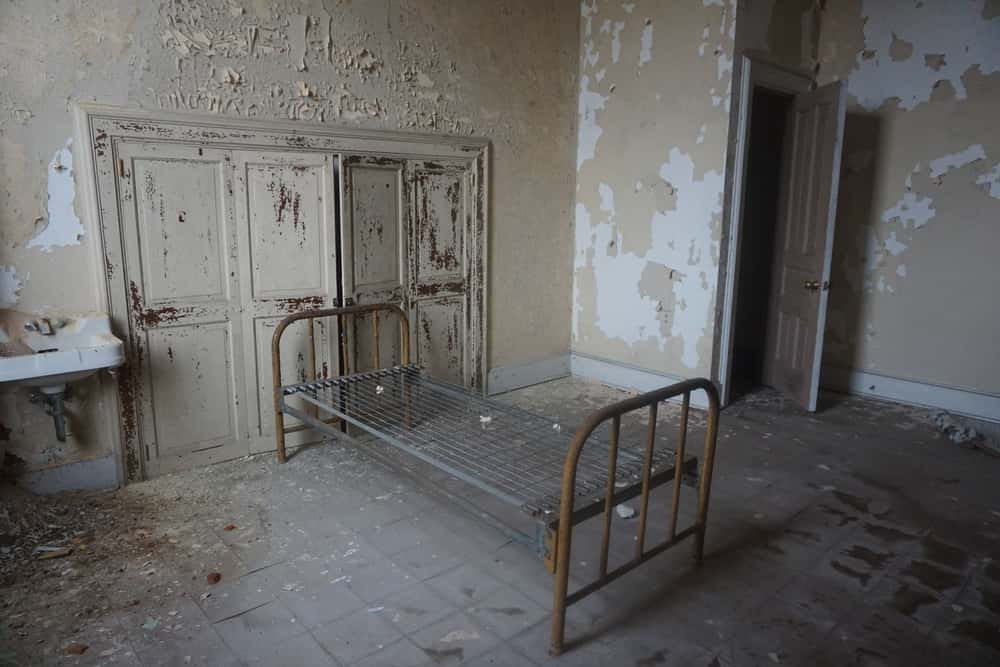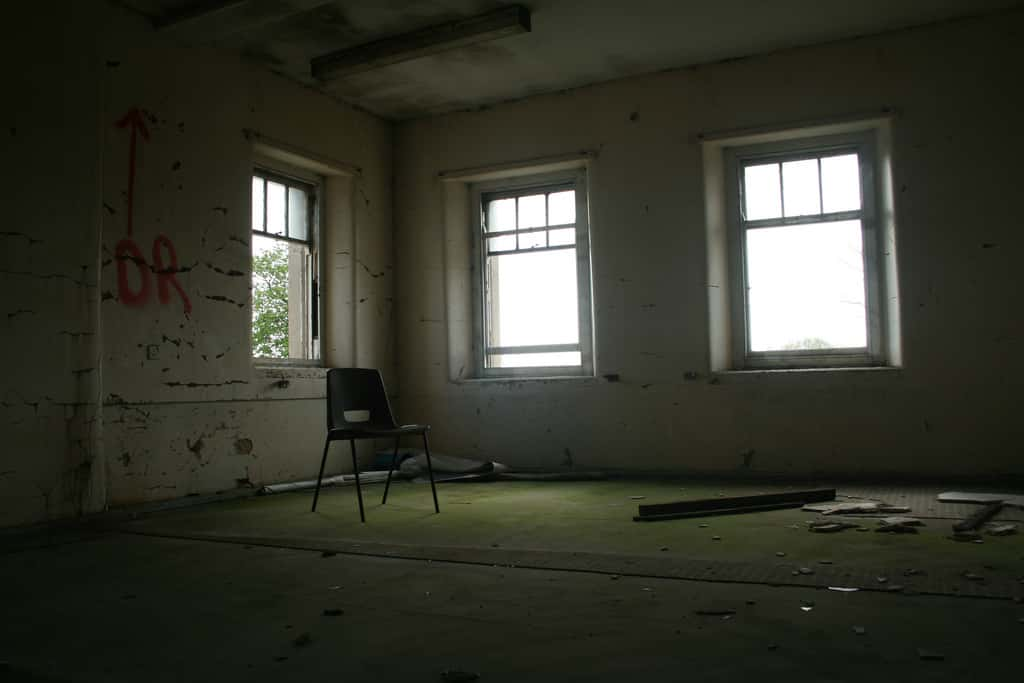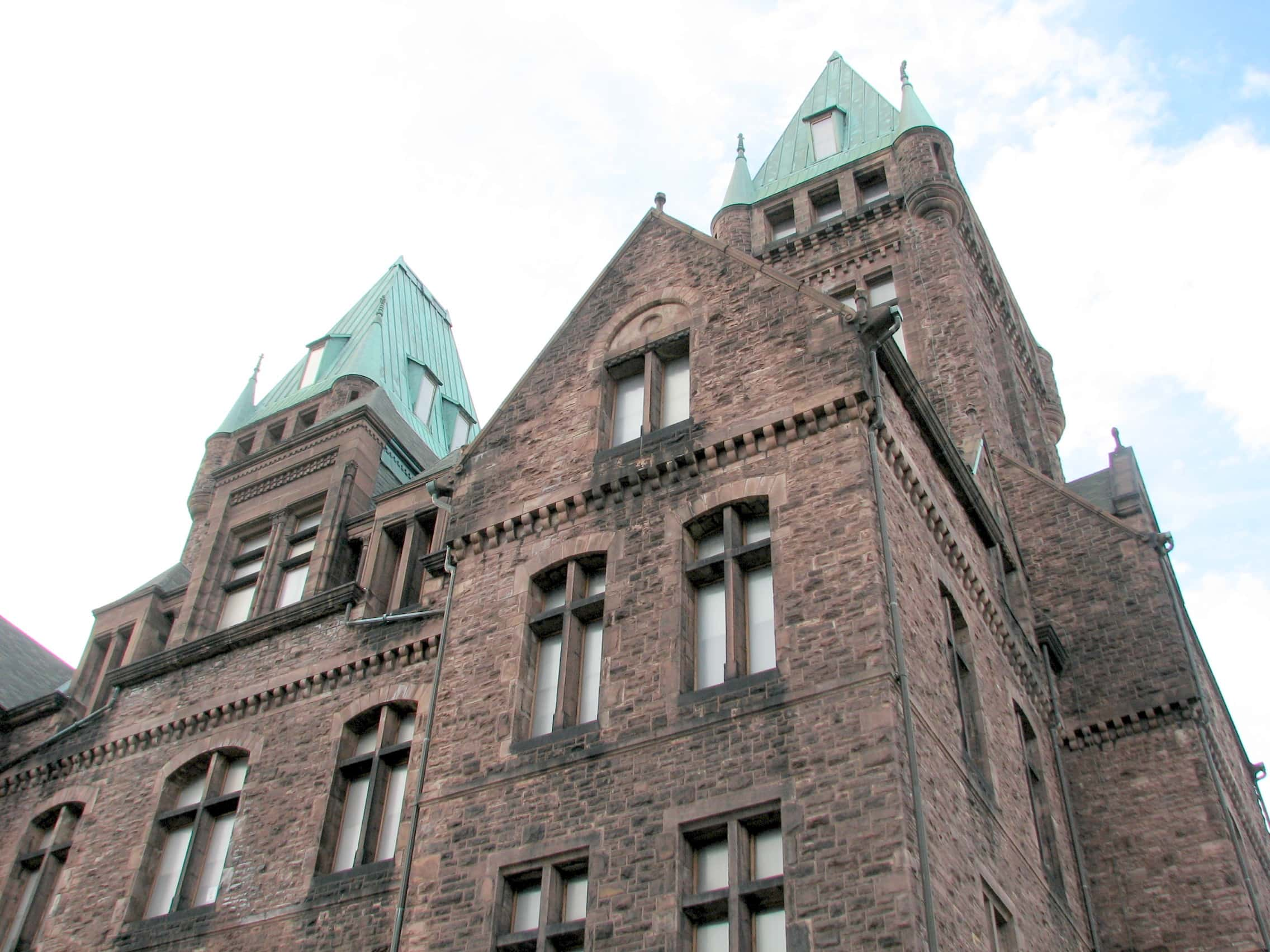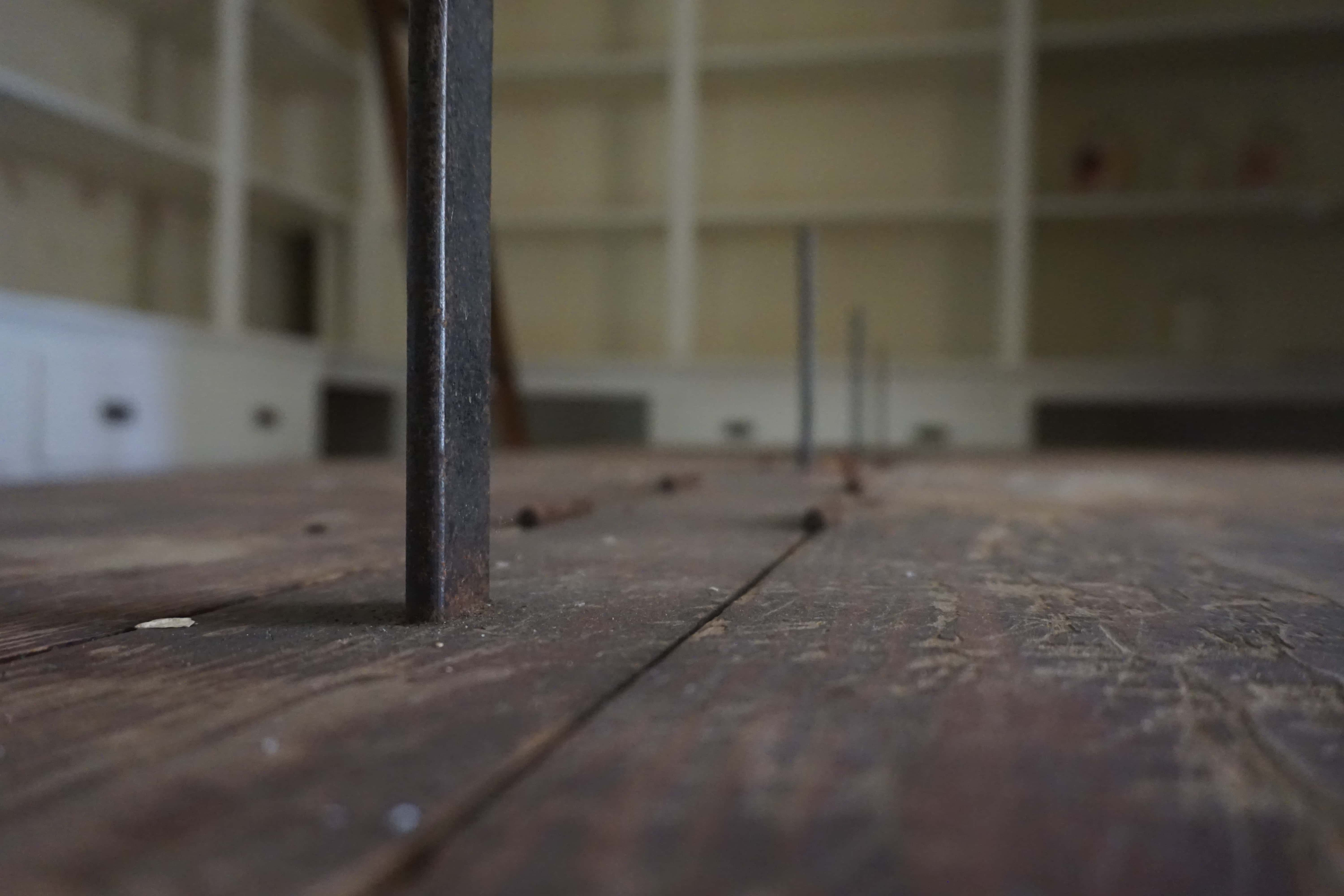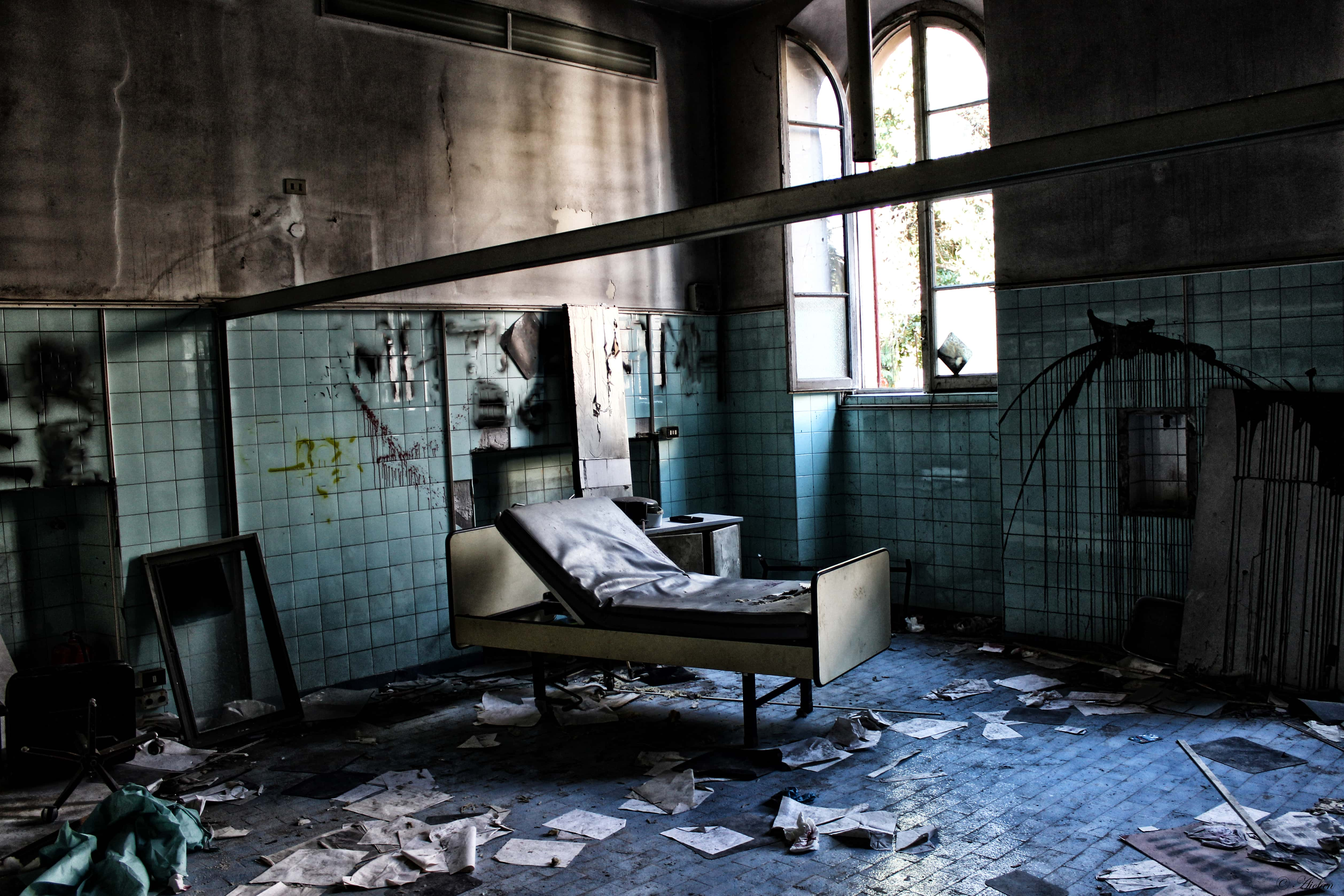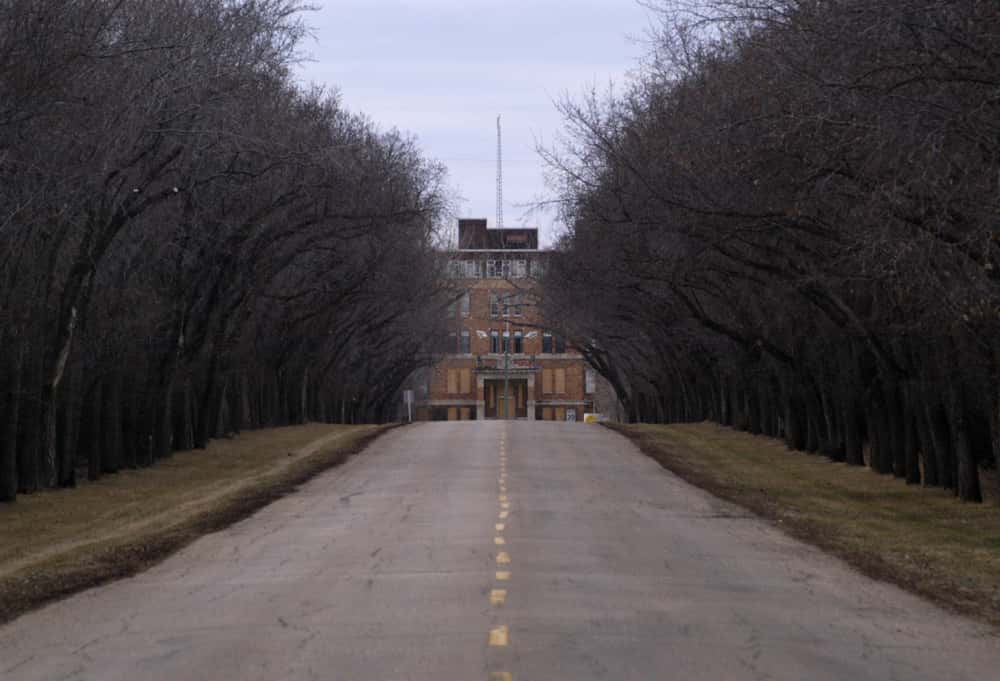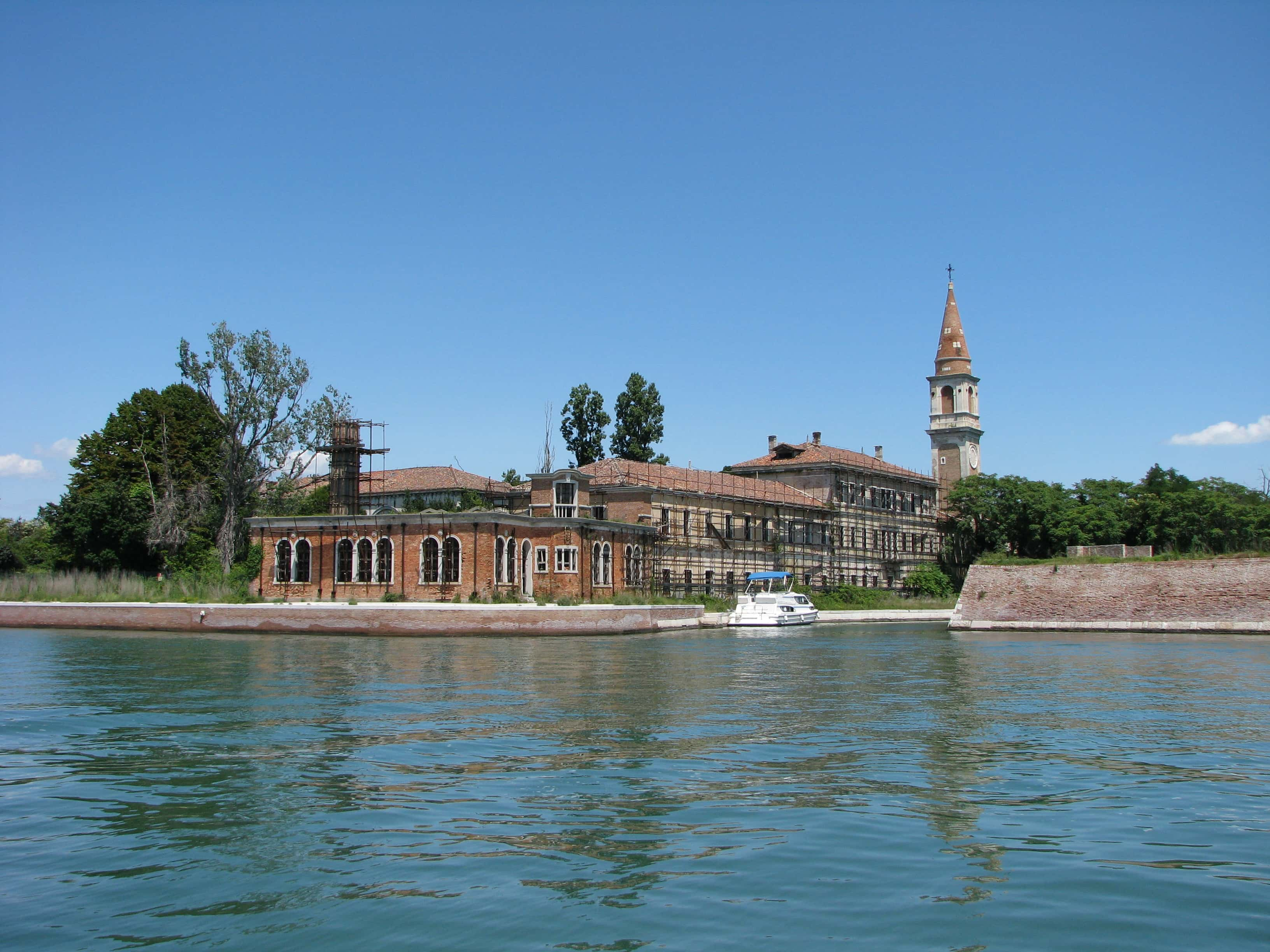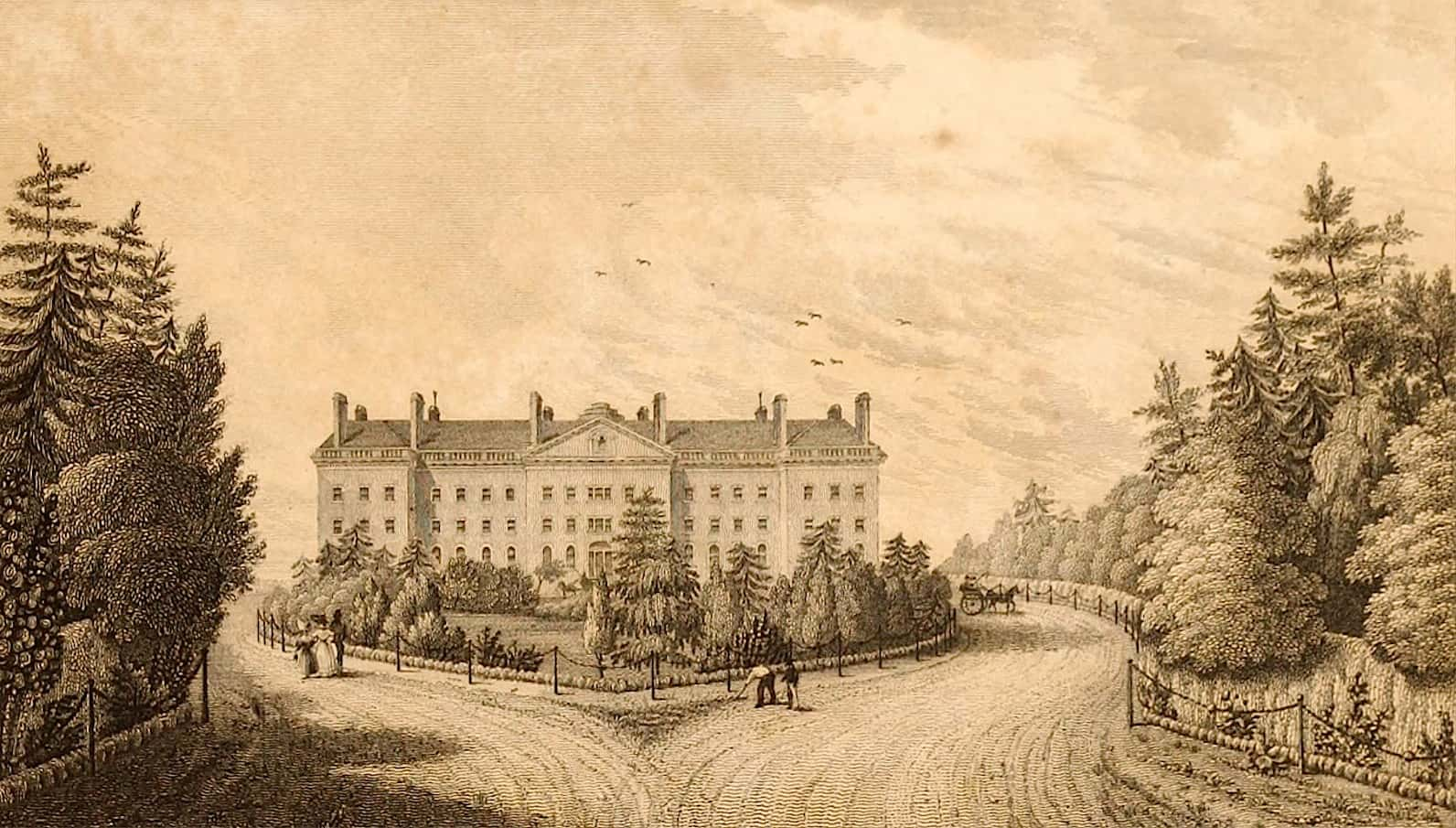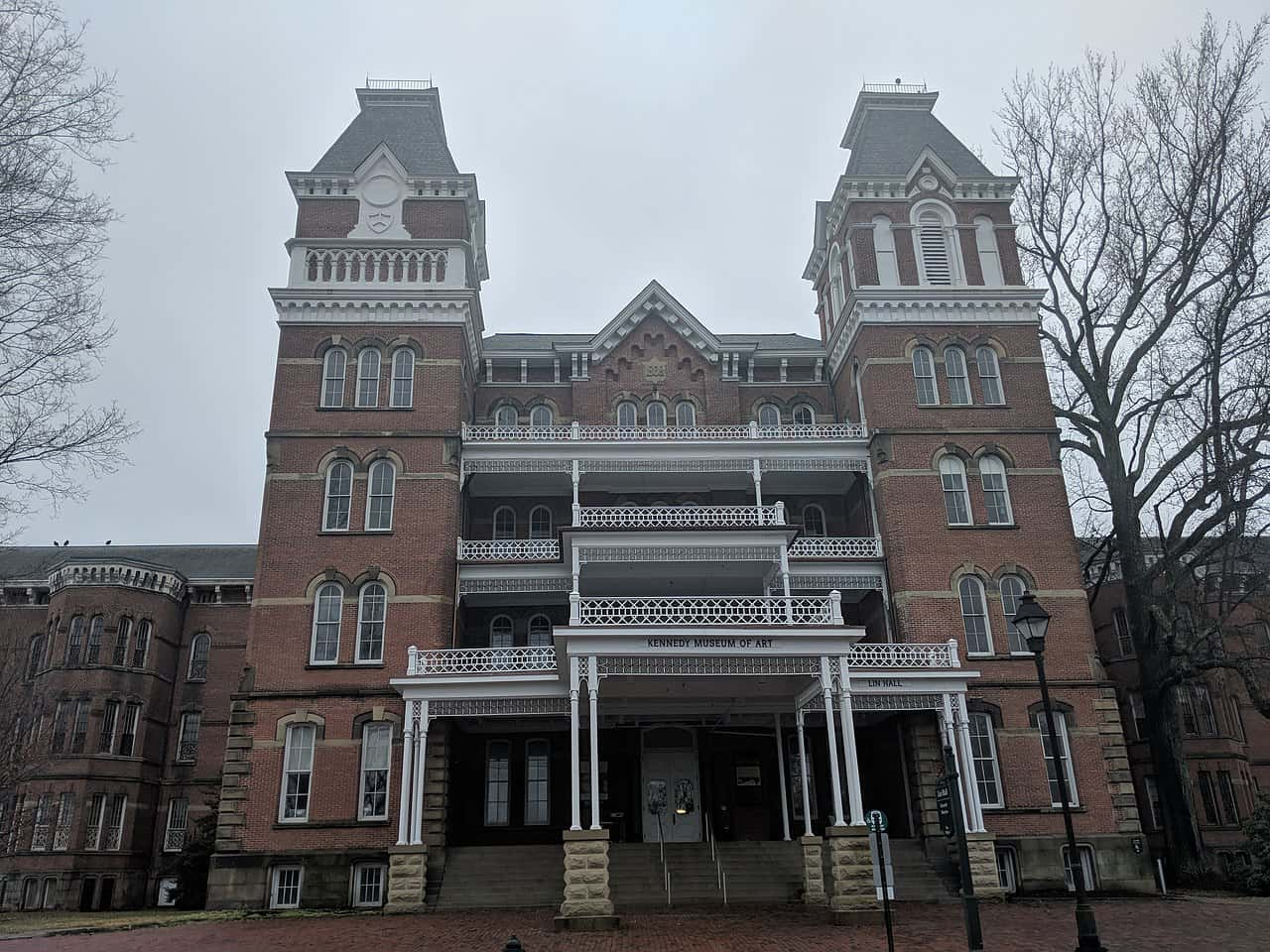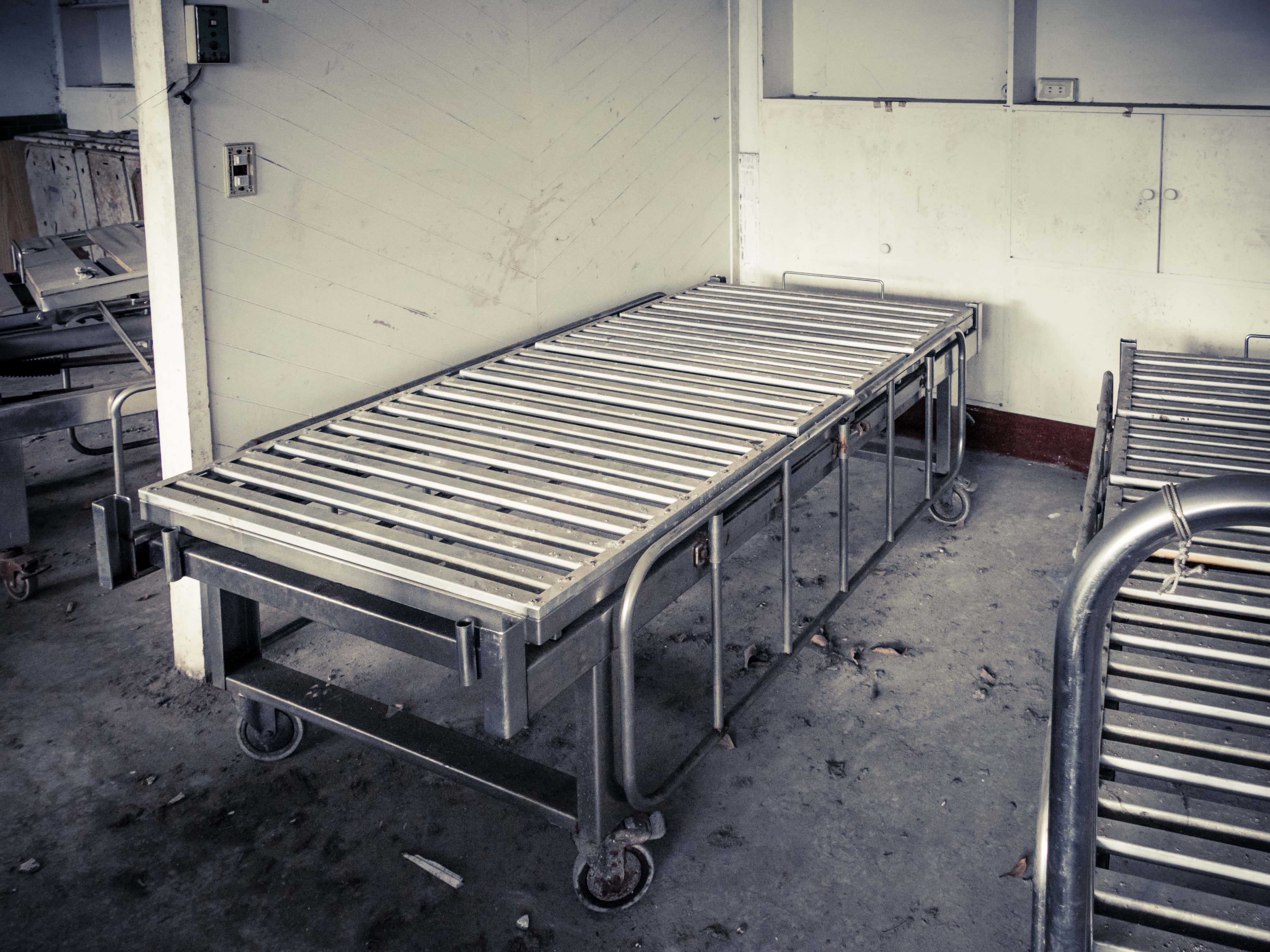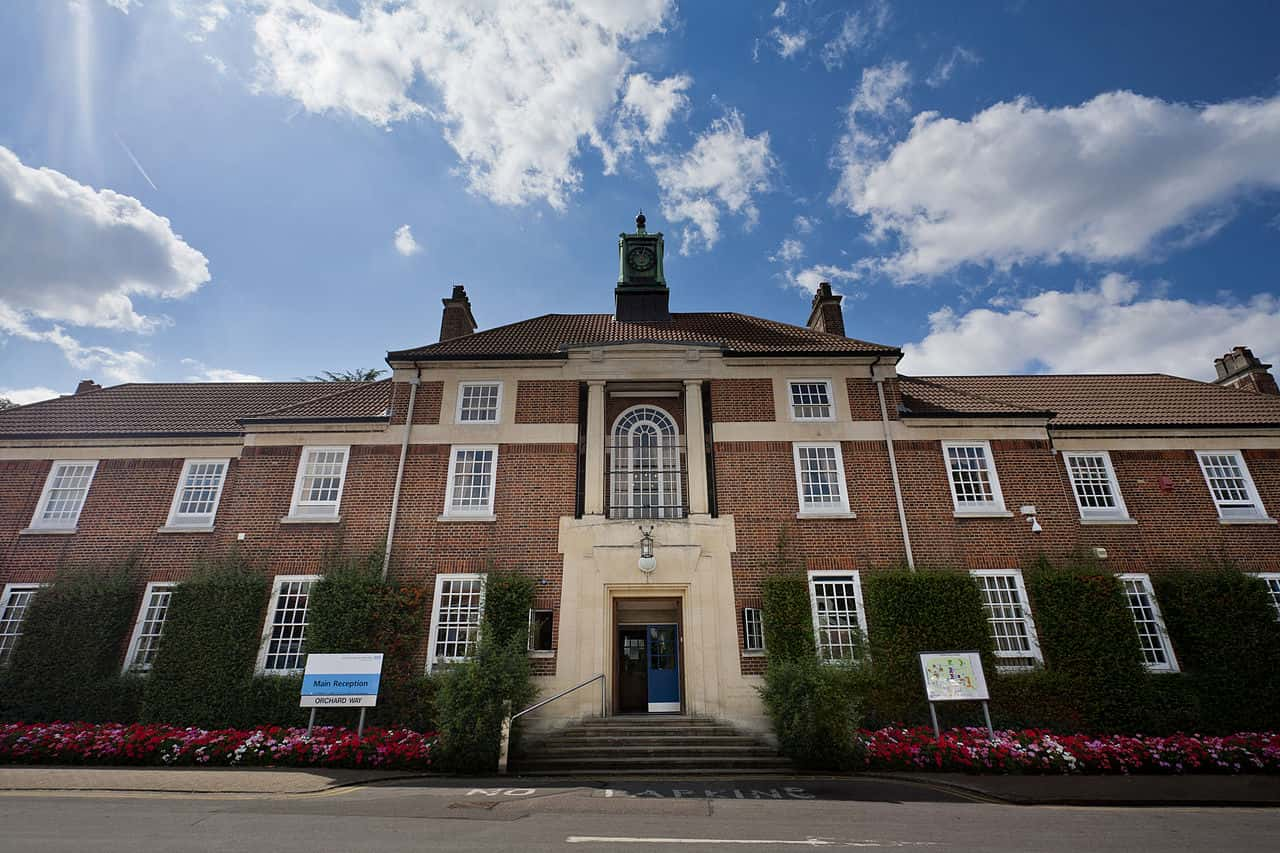"The insane asylum on Blackwell’s Island is a human rat-trap. It is easy to get in, but once there, it is impossible to get out." —Nellie Bly
Insane Asylums (now known as mental hospitals) were institutions that housed the "insane" under the general belief that institutionalizing mentally ill people was the correct form of treatment. The earliest recorded Lunatic Asylum in Europe is Bethlem Royal Hospital in London, which admitted its first mental patients in 1330. Throughout the 19th century and into the early 20th, privately run asylums began to increase in number, and the number of patients housed in asylums grew. Some asylums are said to be haunted, and others have genuine horror stories attached to them. Below are 44 freaky facts about some of the world’s many insane asylums.
44. Real Life Horror Story
The patients at the Topeka State Hospital were frequently subjected to cruelties that were intended to cure them of their illnesses. Patients were reportedly abused and raped, and one newspaper reporter told of seeing a patient who had been confined in leather straps so long, the patient's skin was growing around the straps. In 1931, the state gave the asylum permission to castrate patients who were "habitual criminals, idiots, epileptics, imbeciles, and insane." 54 castrations took place overall. The hospital shut down in 1997, and most of the buildings have been demolished.
43. Ice Pick Lobotomies
The Trans-Allegheny Lunatic Asylum was originally meant to house 250 patients, but by 1949, the population grew to 2400. Patients were locked in cages, lobotomies were performed with ice picks, and hundreds of patients were simply neglected. The institution closed in 1994, and is now billed a ‘haunted asylum’. Paranormal seekers can even stay in the facility overnight if they dare!
42. Noble Intentions
Greystone Park Psychiatric Hospital in New Jersey opened in 1876 with the mission of providing a sanctuary for the mentally ill; however, this was not the case in practice. They squeezed 2412 patients into a space meant for 1600, and they regularly administered insulin shock therapy and electroconvulsive therapy to patients suffering from PTSD. The hospital was shut down in 2003 out of concerns about the aging buildings, and for the negative press the facility had received.
41. Zoo-Like Conditions
Willowbrook State School in Staten Island operated under truly terrible conditions. When Robert Kennedy toured the facility in the 60s, he was ‘appalled’ by the ‘zoo-like’ conditions. When Geraldo Rivera investigated the asylum, he discovered that patients were left to wander around covered in their own urine and feces, and some were sexually assaulted by staff. It may even have housed the famous criminal Cropsey, who killed children and buried them near the Willowbrook grounds. The institution was also partly the inspiration for American Horror Story: Asylum.
40. Britain’s Largest Mental Institution
The Whittingham Hospital in London was once Britain’s largest mental hospitals, and was a pioneer in the use of electroencephalograms. In 1965, stories began to emerge of patients being locked in the courtyard in freezing weather, put to bed wearing only vests, and refused entry to the bathrooms. The hospital closed in 1995, but most of the buildings are still standing.
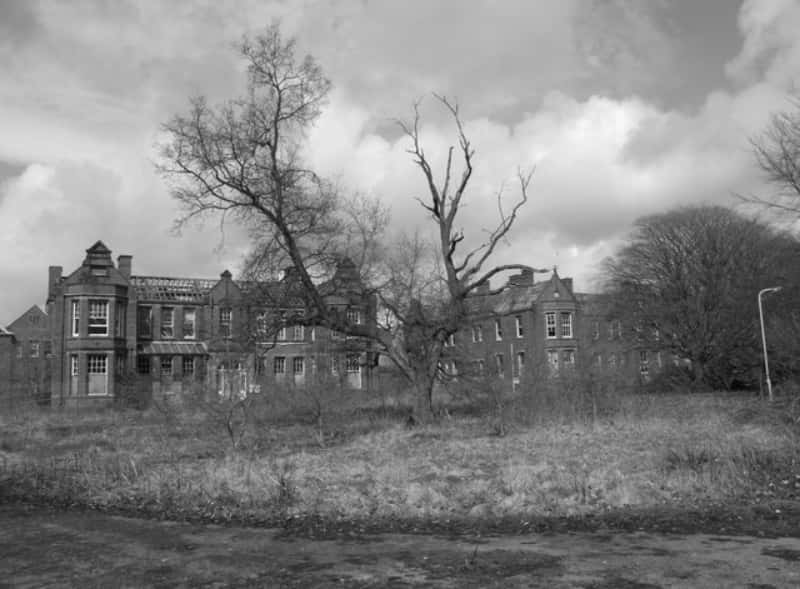 Wikimedia Commons, Saul Beeson
Wikimedia Commons, Saul Beeson
39. School for Idiotic Children
The Walter E. Fernald State School was originally described as "a school for idiotic children," but basically just served as a prison for the mentally ill. Many asylums at the time were referred to as schools despite being nothing of the sort. Sexual and physical abuse was common at Fernald, and MIT researches experimented on the children, lacing their food with radioactive materials to see how the body absorbed ions. In 1998, MIT agreed to pay $2 million to the survivors.
38. Slave Labour
Williamsburg Virginia was home to the first American hospital constructed exclusively for the mentally ill, Eastern State Hospital. It was run like a prison and was partly run by slaves. Patients were constrained by strait-jackets and subjected to physical abuse. Today, the hospital operates as a museum.
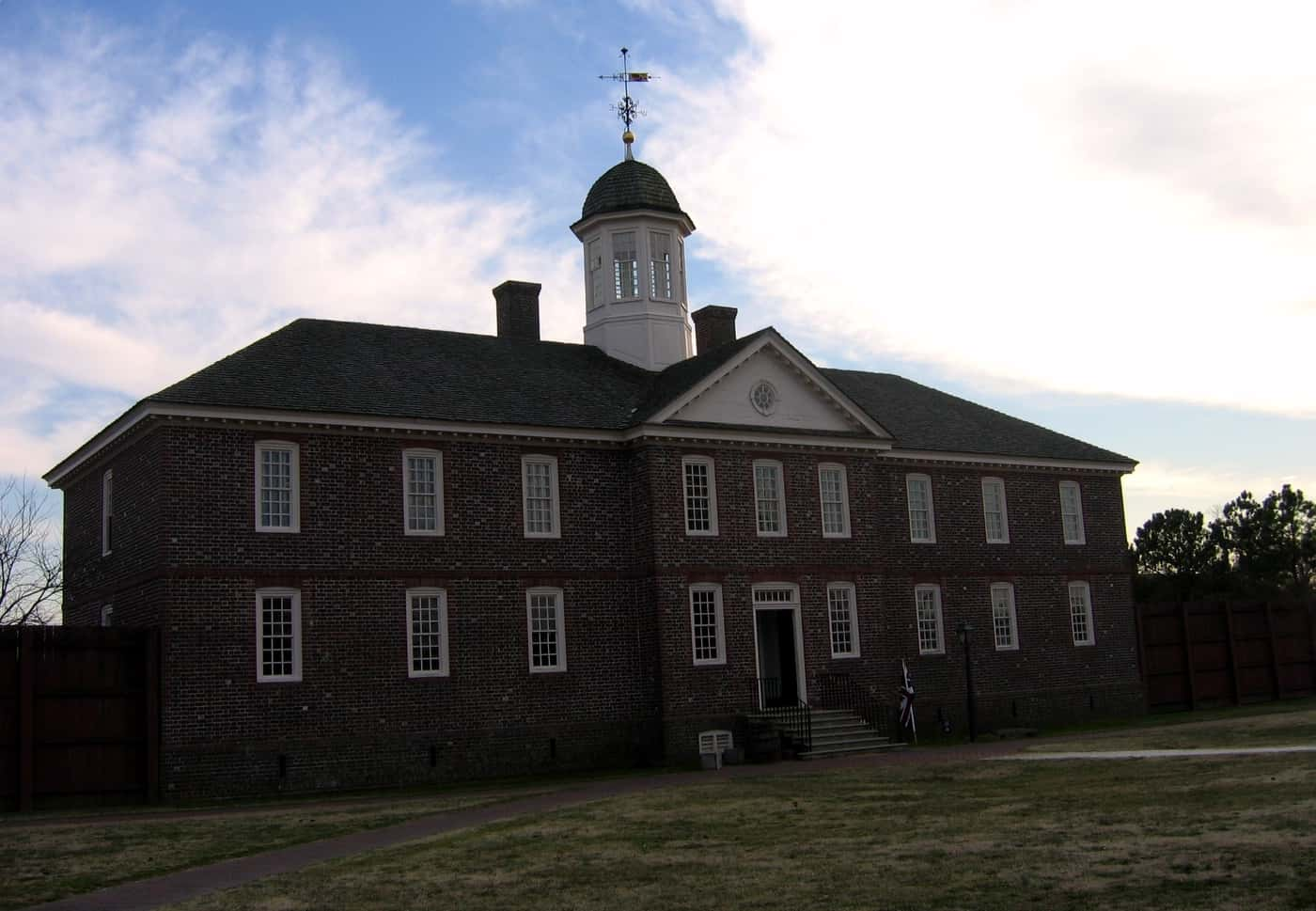 Wikimedia Commons, Ryan Lintelman
Wikimedia Commons, Ryan Lintelman
37. Self-Contained Treatment Center
Overbrook Insane Asylum in Cedar Grove, New Jersey opened in 1896 and remained in operation until 1975. The facility was supposed to be part of a self-contained treatment center for the mentally ill, chosen for its tranquil setting. Patients were subject to neglect, including an incident where patients were left to freeze to death in their own beds. The film version of Chuck Palahniuk’s Choke used the asylum as a set.
36. Home to Notorious Criminals
Broadmoor Hospital in London was founded in 1863, and was named "Broadmoor Criminal Lunatic Asylum." Among the first inmates were two would-be assassins of Queen Victoria, as well as many women who were accused of murdering their own children while suffering post-natal depression. Over the years, Broadmoor became known for its many famous patients, including Charles Bronson. Today, it houses 200 of the most dangerous criminals in Europe, and is the most secure hospital in the UK.
35. Magdalene Laundries
The Magdalene Asylum, otherwise known as the Magdalene Laundries, were Catholic-Church run institutions established for Ireland’s "fallen women" in the 18th century. Over its 150-year history, around 30,000 women were brought there to be institutionalized for reasons ranging from being prostitutes to having a child out of wedlock. The women suffered physical, psychological and sexual abuse while being cut off from the outside world. The Magdalen Laundry in Cork, Ireland closed in 1996 after the discovery of a mass grave near the hospital.
34. A Victim Of His Own Method
In 1927, Dr. Robert Patterson purchased the Christian Church Hospital in Kansas, operating it as a mental facility. For 30 years, he used treatments such as chains, wet sheets, cages, beatings, and the ice pick lobotomy method. In 1957, Patterson suddenly went insane, and when all other attempts to cure him failed, he became a victim of his own method: the ice pick lobotomy. Some say the ghost of Dr. Patterson can still be seen in the window of the staff offices at night.
33. An American Nightmare
Byberry Mental Hospital in Pennsylvania opened its doors in 1907, and was successfully hidden from public awareness for several years. Compared to Nazi Concentration camps in the 1940s, the facility was overcrowded and filthy, patients slept in their own urine and feces, and many roamed the halls naked. Photographs published in a 1946 issue of Life magazine revealed the truth, and sparked widespread reform. In 1989, the facility was permanently closed, citing reasons of "atrocious" and "irreversable" conditions.
32. A Series Of Cottages
Construction on the Bartonville Insane Asylum began in 1885, and was completed in 1887. The original hospital looked like a medieval castle, but was never used, and was torn down in 1897 for "structural and design flaws." In 1902, the hospital reopened with Dr. George A. Zeller running it. It employed a cottage system of 33 buildings to house the patients, and had no window bars or restraints. The hospital ran until 1972, but after closing, the buildings remained unused and were sold off. Today, most of the structures have been converted into office space.
31. Denbigh Mental Asylum
The North Wales Hospital, known as the Denbigh Mental Asylum, was constructed between 1844-1848, and was a refuge for Welsh-speaking mental patients. By 1899, it was home to as many as 1500 patients; well above its original capacity of 200. The hospital was closed for good in 1995, and has been repeatedly vandalized since then. The hospital is supposedly haunted, and has been featured on the British TV show Most Haunted.
30. Where Madness Was Managed
Gartloch Hospital in Glasgow opened in 1889, and was built as an asylum for Glasgow’s poor people. It housed 830 beds at its peak. During WWII, it was converted into an emergency medical services hospital, and mental health patients were transferred elsewhere. It was converted back to an asylum in the 1960s, and closed in 1996.
 Wikimedia Commons, Jonathan Oldenbuck
Wikimedia Commons, Jonathan Oldenbuck
29. Cornwall County Asylum
The St. Lawrence Hospital in Bodmin England was originally known as the Cornwall County Asylum when it was built in 1818. The building was the shape of a star, with a central block and radiating wings. It was originally designed to deal with the problem of housing the mentally ill, and conditions were terrible. Over time, it underwent several reconstructions to extend the building, until it was finally shut down in 2002.
28. Built West Of The Mississippi
Construction on the Texas State Lunatic Asylum began in 1857, and it was the first state facility of its kind built west of the Mississippi. It opened in 1861. It was renamed Austin State hospital in 1925, and is still in operation today.
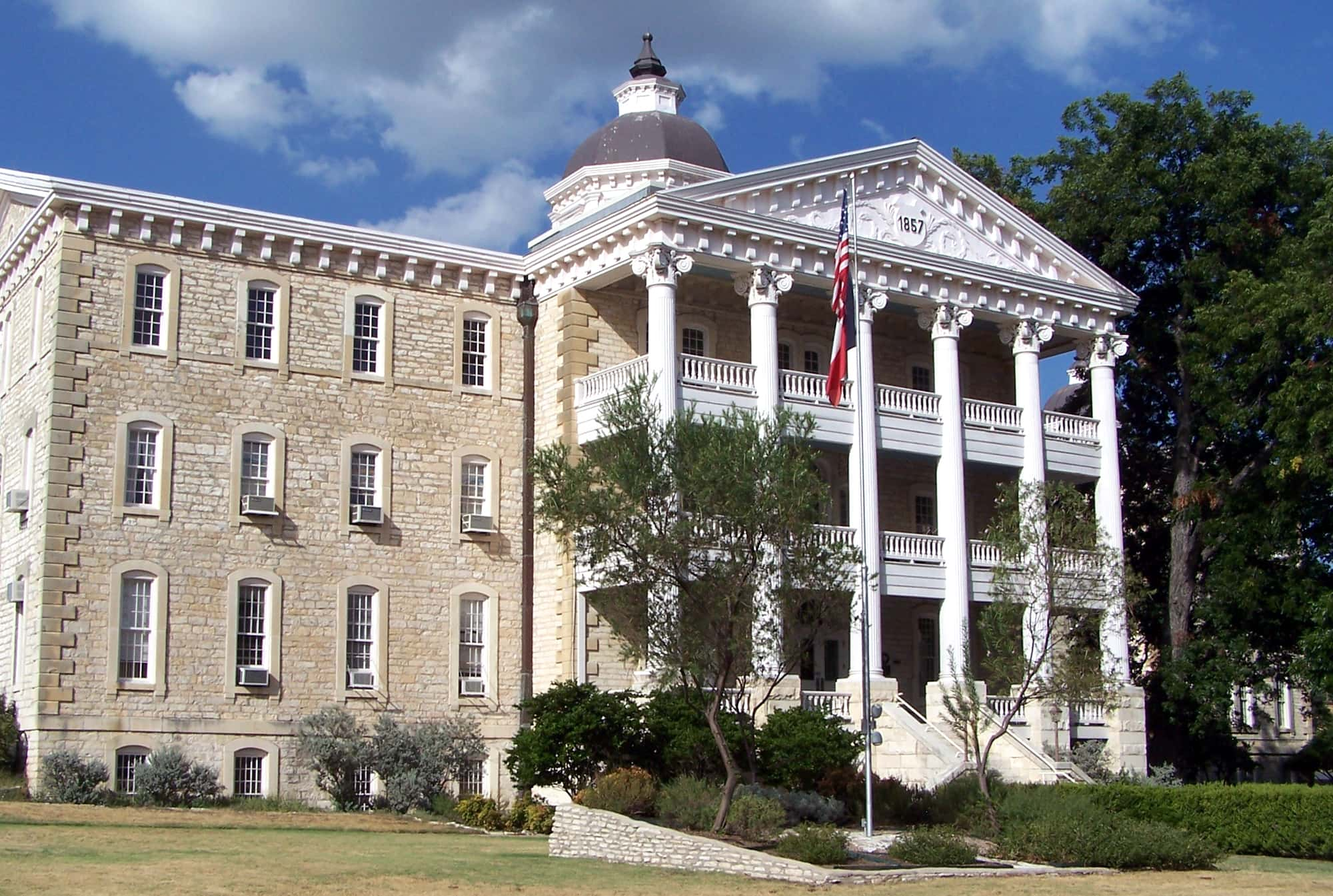 Wikimedia Commons, Larry D. Moore
Wikimedia Commons, Larry D. Moore
27. 128 Years Of Terror
The Mayday Hills Lunatic Asylum in Australia saw 128 years of terror before finally closing in 1995. Few people ever left the facility alive, and somewhere around 9,000 people were said to have died there. It’s common to see faces floating in the windows, along with the Matron doing her rounds, and the sound of children laughing can be heard. The grounds are now the site of LaTrobe University’s Beechworth Campus, but nightly ghost tours are available.
26. Supernatural Hot Bed
The Gonjiam Psychiatric Hospital in South Korea has been called one of the freakiest places in the world by CNN. According to local legend, patients began dying mysterious deaths one after another, which forced the facility to shut down. Some believe the murderous owner of the place was to blame while others suggest that the doctors went insane. In reality, a sewage problem forced the closure, but the hospital is still believed to be haunted.
25. Suffer The Little Children
When Pennhurst Asylum was built in 1908, it was intended to educate and care for the mentally disabled. A 1968 television exposé called "Suffer the Little Children" showed the harrowing conditions of the asylum, including the screams of neglected children, large scale mental and physical abuse, and a genral lack of empathy. The report also showed that children who bit one another got a warning first, and had teeth pulled if it happened again. The report, along with the account of a former resident, led to a successful class-action lawsuit, and the the institution was closed.
24. Hospital Of Seven Teeth
From the 1920s until 1992, the Metropolitan State Hospital in Waltham, Mass was a home for the mentally ill. Abandoned for 15 years after its closing, the hospital has a history of ghost sightings, murder and mayhem. In 1978, Anne Marie Davis was murdered there by a fellow patient who kept seven of her victim's teeth as a souvenir. By 2009, most of the original buildings had been demolished, and replaced with condo complexes. Only the hospital’s administration building remains.
23. The Castle On The Hill
The Danvers Hospital for the Criminally Insane was the basis of several H.P. Lovecraft horror stories, as well as the Arkham Asylum in Batman. The institution stood in the town formerly known as Salem Village, on the ground where a prominent judge in the Salem Witch Trials lived. The treatments ranged from lobotomies to strait-jackets to shock therapy as a means of control when overcrowding became a problem in the 20s and 30s. The state closed the hospital in 1992, and the site is said to be haunted by malevolent spirits. Most of the original buildings have been demolished, and it’s now an apartment complex with only the façade remaining.
22. Lier Asylum
Built in 1926, the Lier Asylum roomed nearly 700 patients, and is said to be one of the most haunted spots in Norway. The hospital was notorious for conducting experiments on its patients, especially for testing new drugs that even the pharmaceutical industry was reluctant to try on humans. The asylum shut down in 1986, but beds, wheel chairs, tables, and equipment are still lying around the abandoned buildings.
21. Fool’s Tower
The Narrenturm, or "lunatic’s tower," in Austria was the world’s first building designed for keeping mentally ill patients locked up in a central facility. Construction began in 1783, and the first patients were admitted in 1784. Since treatment for mental illness was non-existent at the time, the patients were simply incarcerated, two people per cell, with only a bed and bare walls. In 1866, it ceased to function as an asylum, and is now a branch of the Natural History Museum of Vienna.
20. Maiming In New Jersey
The Trenton Psychiatric Hospital in New Jersey opened in 1848, and was the first public mental hospital in the state. Over the years it has gone by several names, including the New Jersey Lunatic Asylum. When Dr. Henry Cotton took over as director in 1907, the asylum took a dark turn. He believed that mental illness was equated with body infections, and used surgery as a cure. He removed body parts ranging from teeth to testicles, leading to many deaths. Dr. Cotton died in 1933, but many of his practices remained standard at the facility into the 1960s.
19. Hospital For The Mind
In 1913, Riverview Hospital opened in British Columbia, Canada as a “hospital for the mind.” The first buildings housed 350 male patients, and could be accessed via a private train station. By the 1950s, the facility expanded to 4,500 patients, and new buildings and facilities were added, including wards for women. The hospital also had its own bowling alley, bakery and cinema. Over time, as more facilities opened, it began to downsize, closing for good in 2012. To date, several TV shows and movies have filmed there, including The X-Files and Battlestar Galactica.
18. The Toronto Asylum
When the facility at 999 Queen Street West in Toronto opened in the mid 1800s, it was the first facility in Upper Canada (Ontario) to be built for the mentally ill. Previously, "quiet" lunatics remained at home, while the more threatening mentally-ill people were kept in jail. The hospital was optimistically viewed as a true asylum with no disturbing influences, but within a few years that opinion drastically changed. A disgruntled former employee accused the medical director Joseph Workman of "villainy, deceit, and tyranny," and his letter was published in the Toronto-based paper The Globe. The site operated as a psychiatric facility for over 150 years until provincial psychiatric hospitals were transformed into public hospitals.
17. Duplessis Orphan Scandal.
In the early 50s and 60s, orphaned children were falsely labeled as mentally retarded, and were placed inside mental institutions such as the Saint-Julien Hospital in Quebec. The Duplessis Orphan Scandal implied that Quebec’s Prime Minister, Maurice Duplessis, conspired with figures in the Roman Catholic Church to have orphans transferred to the facility in order to secure more federal funding. The children suffered physical and sexual abuse, and a large portion were experimented on. The hospital was demolished in 2012.
16. The Haunted Asylum
The St-Clotilde-de-Horton Insane Asylum in Quebec was built as a monastery in 1939, and was converted into a religious institute for young men in 1953. Tragedy struck in 1958 when three teens died in a fire, and in 1969, it was sold to the government and converted into an asylum. Tragedy struck again in 1988, when another fire killed nine patients ranging from 32-50 years old. The facility has been abandoned for over a decade, and is now called “The Haunted Asylum” by locals.
15. A House for the Criminally Insane
Rockwood Asylum was commissioned by Upper Canada Premier Sir John A. Macdonald to house the criminally insane of Kingston Penitentiary in Ontario, and construction began in 1859. Once completed, it housed 300 patients. Patients wore canvas uniforms with the word "lunatic" on them, and sedatives and alcohol were used to keep patients under control. It was also reported that some of the first neuro-surgical lobotomies were performed on patients at Rockwood. The facility closed in 2000, and stands empty except, perhaps, for the ghosts who lurk in the halls.
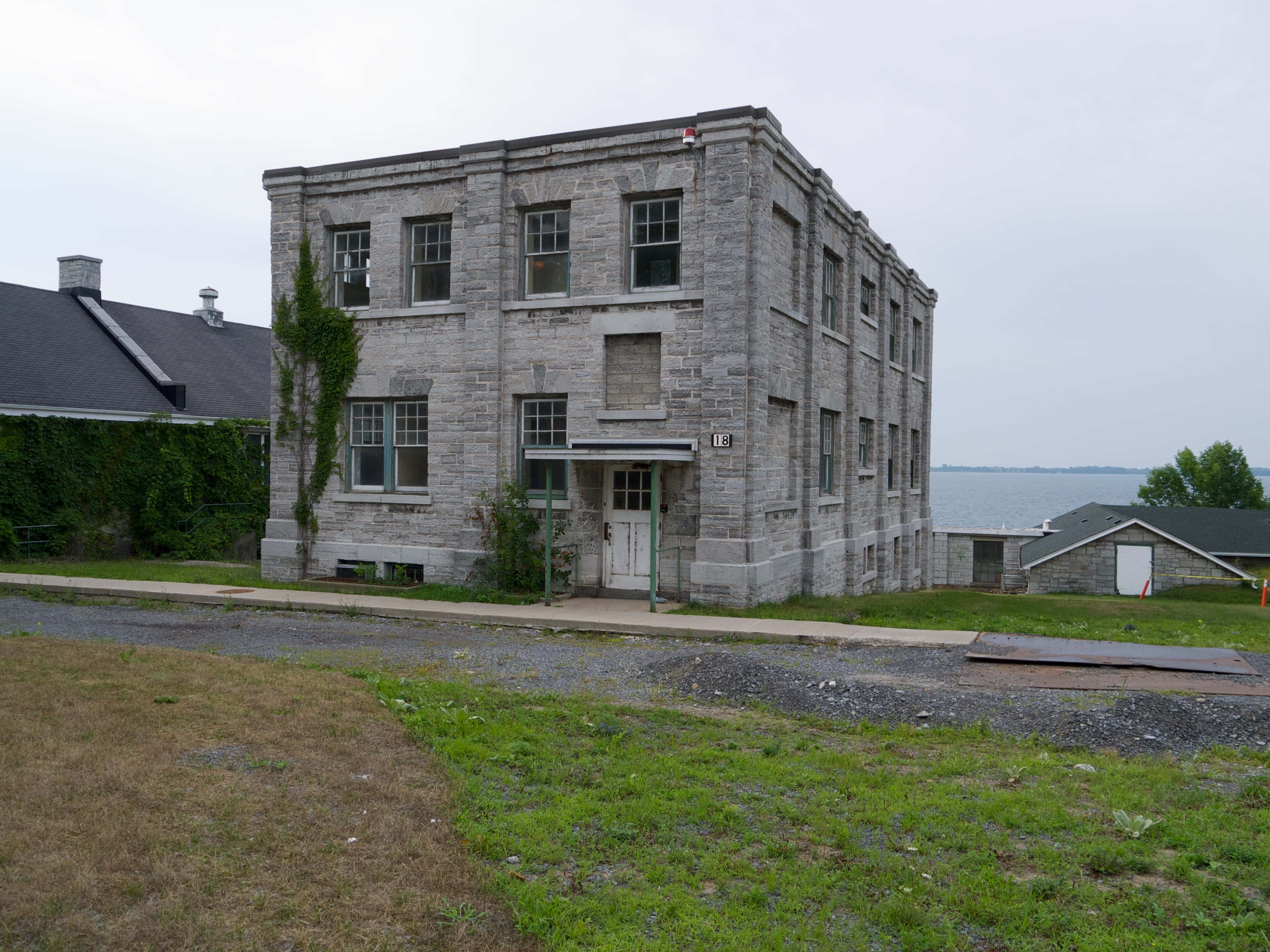 Wikimedia Commons, JustSomePics
Wikimedia Commons, JustSomePics
14. Moral Therapy
The London Asylum for the Insane opened in November 1870 just outside the city of London, Ontario. Like Henry Cotton, Dr. Maurice Bucke, superintendent from 1877-1902, believed that insanity was related to ills of the body, and performed horrifying treatments. He thought that problems with reproductive organs caused hysteria in women, and performed regular hysterectomies. He also believed that masturbation led to insanity, and male patients were subjected to physical discipline and mechanical restraints to control their tendencies. The hospital closed its doors for good in 2014.
13. New York’s Bedlam
Founded in 1736, Bellevue Hospital was America’s oldest public hospital, and was a refuge for New York’s undesirables. In 1931, a psychiatric facility was built on the grounds, and has inspired comic books, horror movies, and nightmares. The building became associated with disturbing psychiatric practices, including insulin shock therapy, and is the New York version of London’s Bethlem. The hospital closed in 1984, and today it is partially used as a homeless shelter, but the building is mostly empty and abandoned.
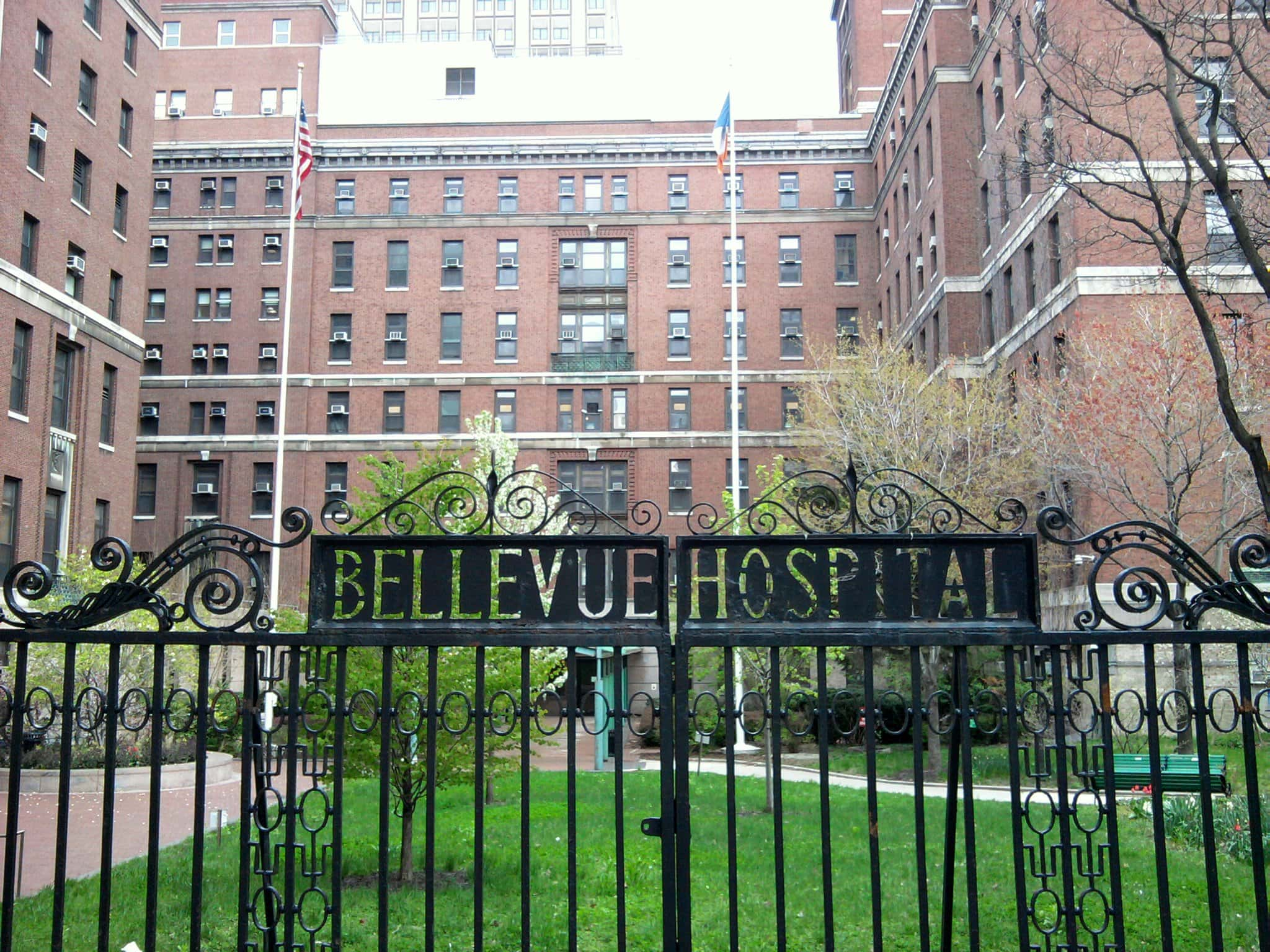 Wikimedia Commons, Jim.henderson
Wikimedia Commons, Jim.henderson
12. Provincial Lunatic Asylum
Centracare, once called the Provinical Lunatic Asylum, was built on the bluff overlooking the St. John River in New Brunswick in 1848. While not known for harsh treatments, patients were subjected to isolation, hot and cold baths, and restraints. The building was demolished in 1999, and is now a privately-owned park, but it left behind a legacy of being haunted. There have been reports of a baby crying, disembodied voices, and a cold mist hanging over the area.
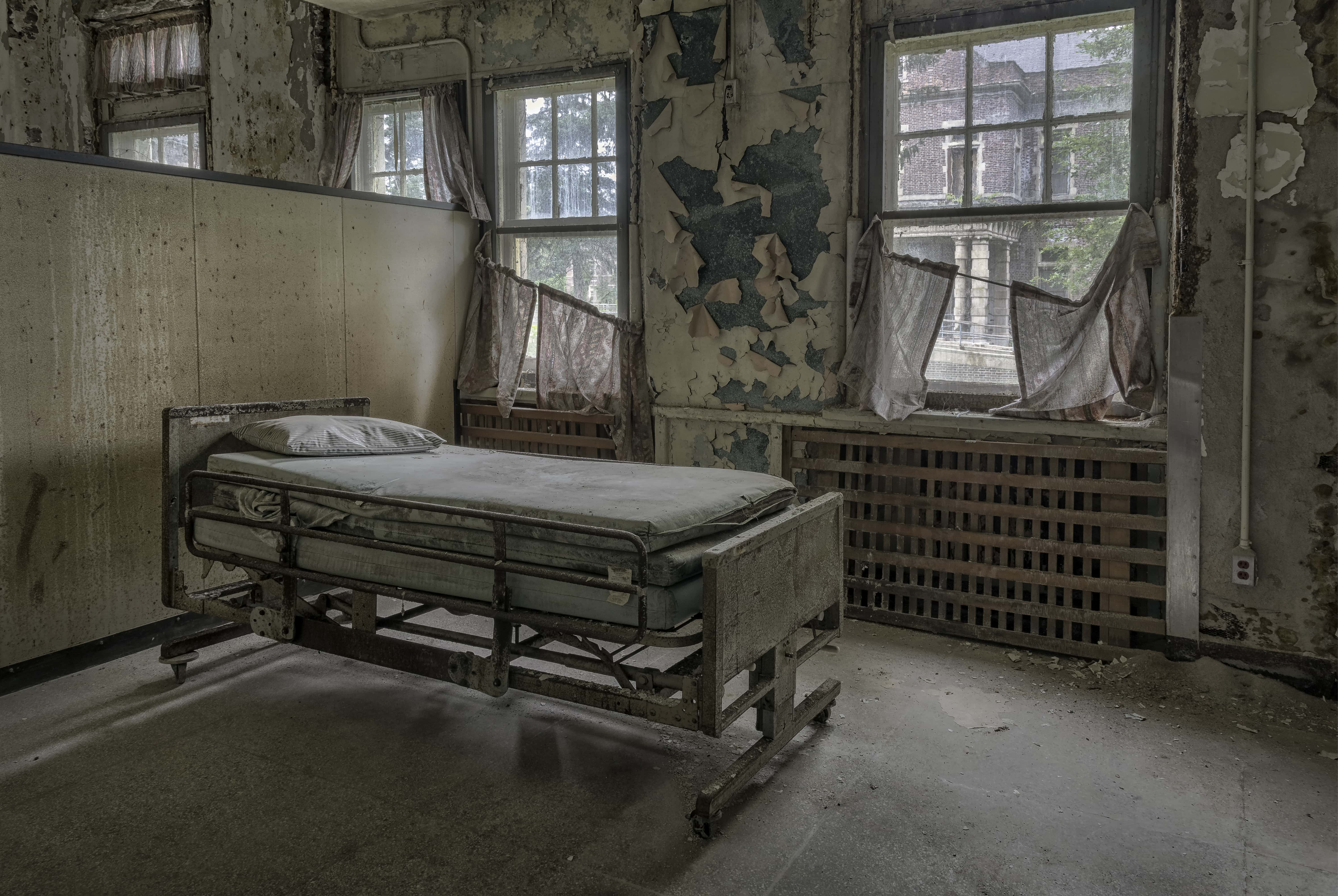 Getty Images
Getty Images
11. Lincolnshire Lunatic Asylum
St. John’s Hospital outside of London was built in 1852 to house mentally ill people. Originally called the Lincolnshire Lunatic Asylum, it held 250 patients and later expanded to 680. Stories claim that patients were held in padded cells, and had terrifying medical procedures performed on them. Now the site of a pub, several ghostly phenomena have been reported, including sightings of ghostly doctors and nurses roaming the halls.
10. Full of Screams
The Buffalo State Asylum opened in New York in 1880, and treatment was comprised almost entirely of horrifying experiments. Patients' heads were cut open to isolate sections of their brains, doctors used electro-shock therapy, and wards were placed in tubs of water for extended amounts of time. The sound of blood-curdling screams is frequently reported traveling from the end wing of each room, but nothing has ever been found.
9. One Way Trip
The majority of the people who were admitted to the Willard Asylum for the Chronically Insane in Ovid, New York never left. The average stay was 30 years, and many died there, forgotten by the people who brought them there. In 1995, when the institute was closing, 400 unopened suitcases were discovered in the attic, and they contained items that suggested that some of the patients were well-to-do and had previously led normal lives.
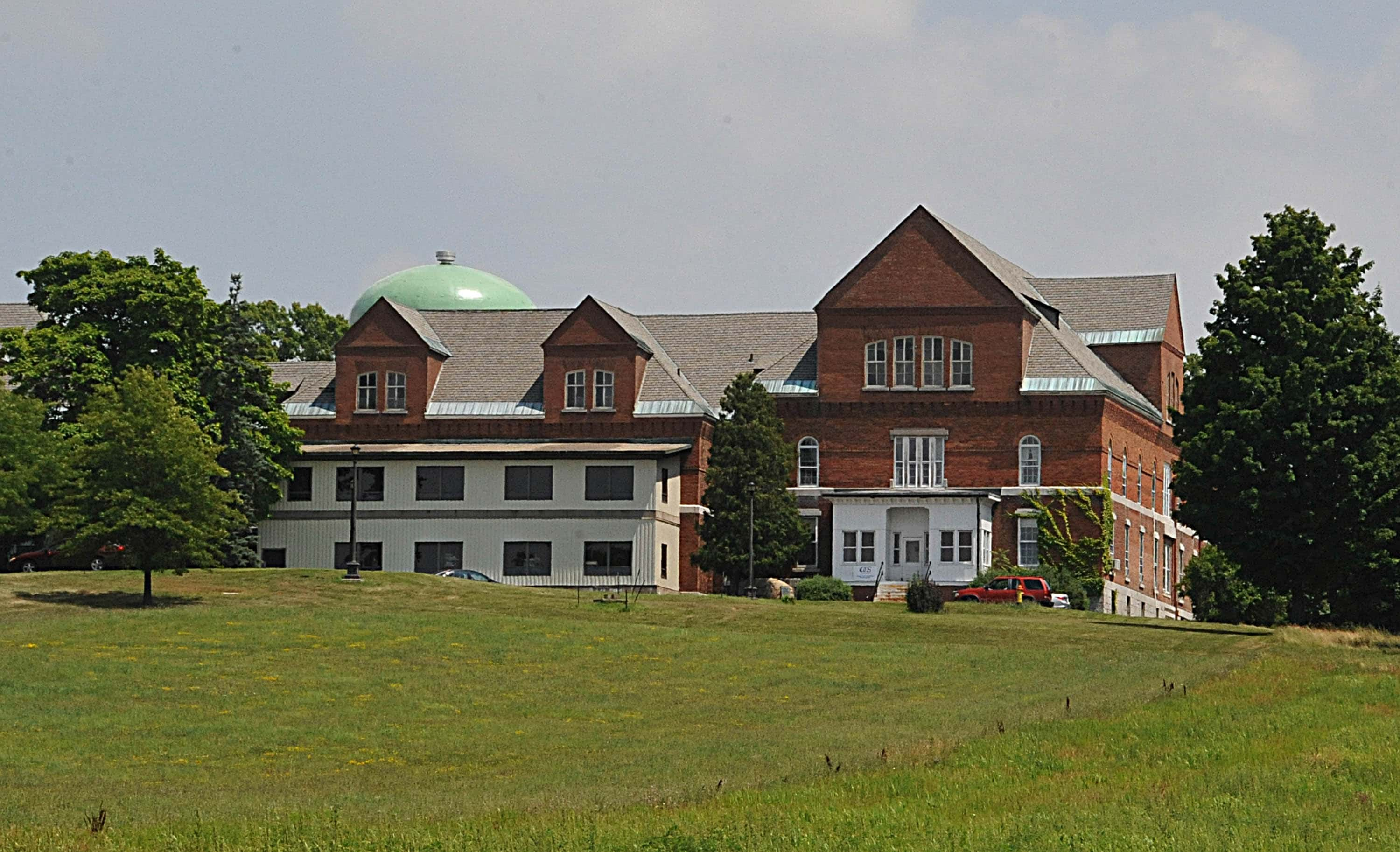 Wikimedia Commons, Jerrye & Roy Klotz, MD
Wikimedia Commons, Jerrye & Roy Klotz, MD
8. Place of No Return
Ospedale Psichiatrico di Volterra was a psychiatric hospital in Tuscany, Italy where more than 6,000 patients were sent for treatment. It was called the "place of no return" because patients were supposedly not allowed to leave. There were bars on the windows and spy holes on the doors, suggesting that the patients were supervised 24/7. Patients were also tied to their beds in strait-jackets, and letters from family were hidden from them. The asylum was shut down in 1978 after its practices were deemed cruel.
7. Mansion On The Hill
For over a century, the Hamilton Insane Asylum was an unsettling landmark atop a hill. Residents would warn, “be careful or you might end up in the mansion on the hill”—and with good reason. Treatments included morphine injections, salt rub simulation, and alcohol. In the 1980s, the building, now called "Century Manor," became a museum, but the museum is now closed and the bulding is no longer in use.
6. Psychedelic
The Weyburn mental hospital opened in 1921 and became one of Canada’s most notorious psychiatric institutions. Not only were lobotomies performed there, but it was also the site of LSD experiments. Dr. Humphrey Osmond coined the term "psychedelic," and was among the first to use LSD in psychiatric experiments. The hospital closed in 1971, and the building was demolished in 2009.
5. The Island Of Madness
Poveglia Island in Italy has the distinction of being the world’s most haunted island. During Roman times, it was used to isolate plague victims, and legend says that 160,000 people died. In 1922, a mental hospital was built on the site, with a large bell tower. Patients reported seeing the ghosts of plague victims on the island, and were kept up at night hearing their wails. One of the doctors performed brutal experiments on his patients, and others were taken to the bell tower and tortured. Legend has it that the doctor began to hear the victims' ghosts himself, and went mad, throwing himself from the top of the bell tower. The tower was removed years ago, but people claim to still be able to hear the chimes.
4. Definitely Not The Department Store
Columbia University’s Buell Hall is the former home of the Bloomingdale Lunatic Asylum. The hospital was built in 1821 to morally rehabilitate patients, but the treatment included some un-kosher practices. In 1872, journalist Julius Chambers had himself committed for 10 days, during which he discovered that patients were kicked and choked until they bled; in some cases, patients were driven to suicide. Chambers' book A Mad World and Its People led to a reform of rights for mentally ill people.
3. Treating Hysteria
In the 19th century, "hysteria" was the term for women who showed sexual desire and strong emotions. From 1870-1968, 132 female patients were housed at the Athens Lunatic Asylum in Ohio for similar issues, including "menstrual derangements." Treatment for the women included kicking, freezing, shocking, and even—you guessed it—lobotomizing. One patient, Margaret Schilling, tried to escape by hiding in the attic, and ultimately died there of starvation.
2. World’s Largest Hospital
At its highest capacity post-WWII, Pilgrim State Hospital housed 14,000 patients. The property had its own Long Island Railroad station, a post office with its own postmark, a power plant, agriculture and livestock farms, a cemetery, police and fire stations, and a water tower. Considered to be on the cutting edge of psychiatric medicine, lobotomies were frequently performed, as was electro-convulsive therapy. Countless patients suffered irreversible damage from their treatments. A 500+ bed modern facility operates on the site, but most of the original buildings have been abandoned.
1. Bedlam at Bethlem
London’s Bethlem Royal Hospital is widely recognized as one of the worst lunatic asylums in the world. Built in 1247, the facility is Europe’s oldest mental health facility. In 1675, problems arose when the facility was overflowing with patients afflicted with everything from learning disabilities to schizophrenia. Many treatments were said to be so agonizing that some patients didn’t survive, and mass graves were found on the property. One of the most controversial treatments was rotational therapy: the practice of spinning a patient in a chair repeatedly. Bethlem's nickname "Bedlam" has since become synonymous with insanity.
Sources: 1, 2, 3, 4, 5, 6, 7, 8, 9, 10, 11, 12, 13, 14, 15, 16, 17, 18, 19, 20, 21, 22, 23, 24, 25, 26, 27, 28, 29, 30, 31, 32, 33


